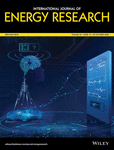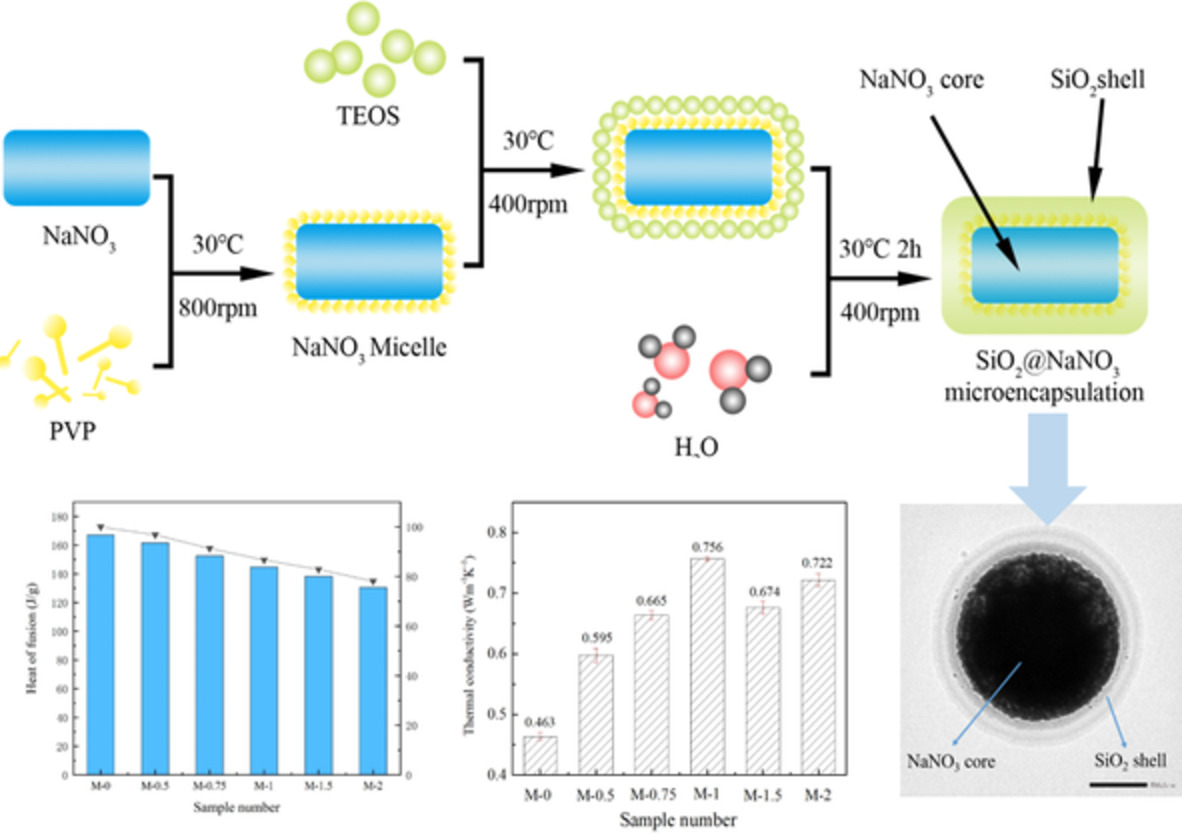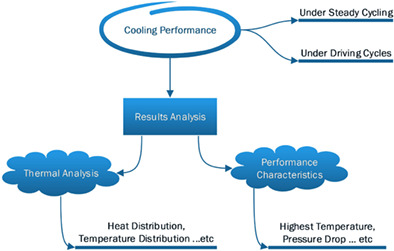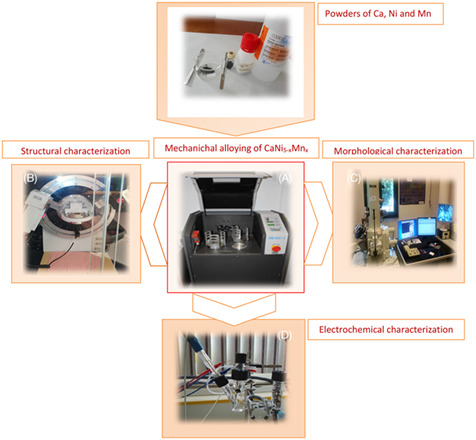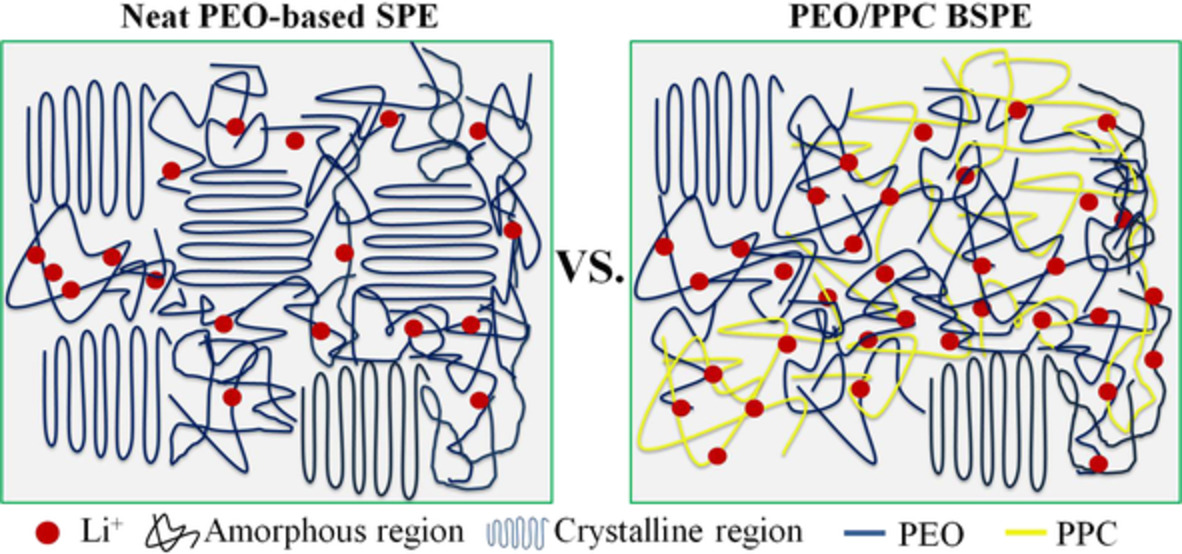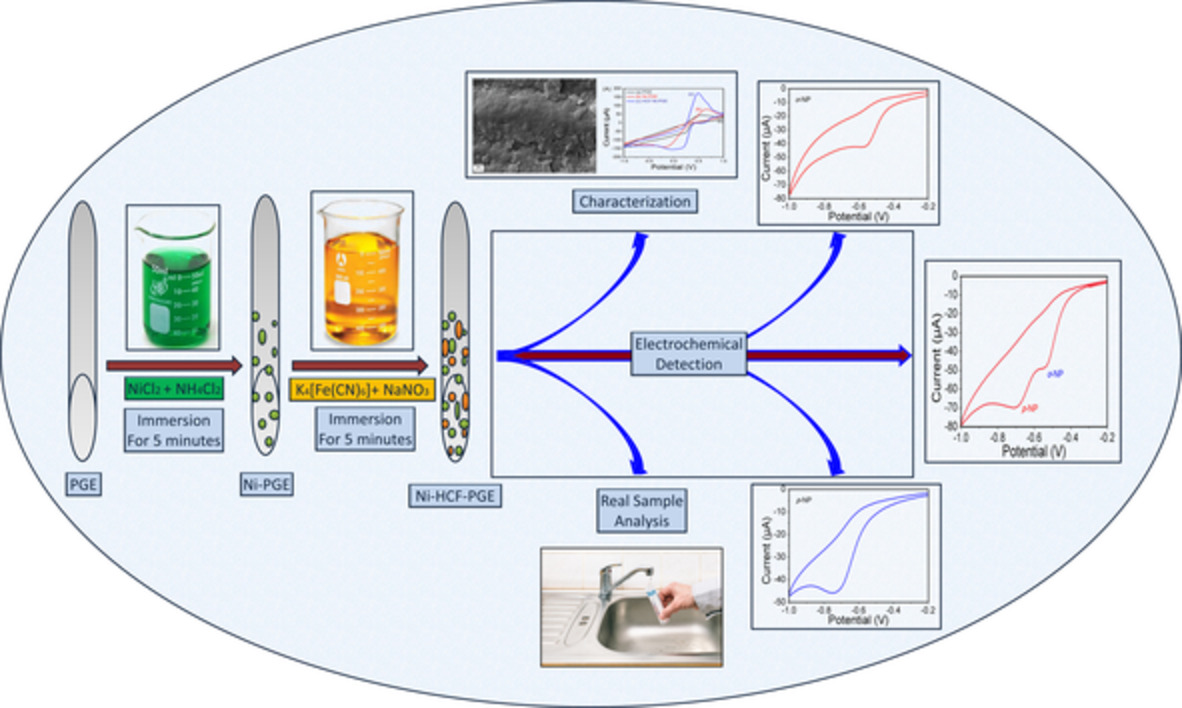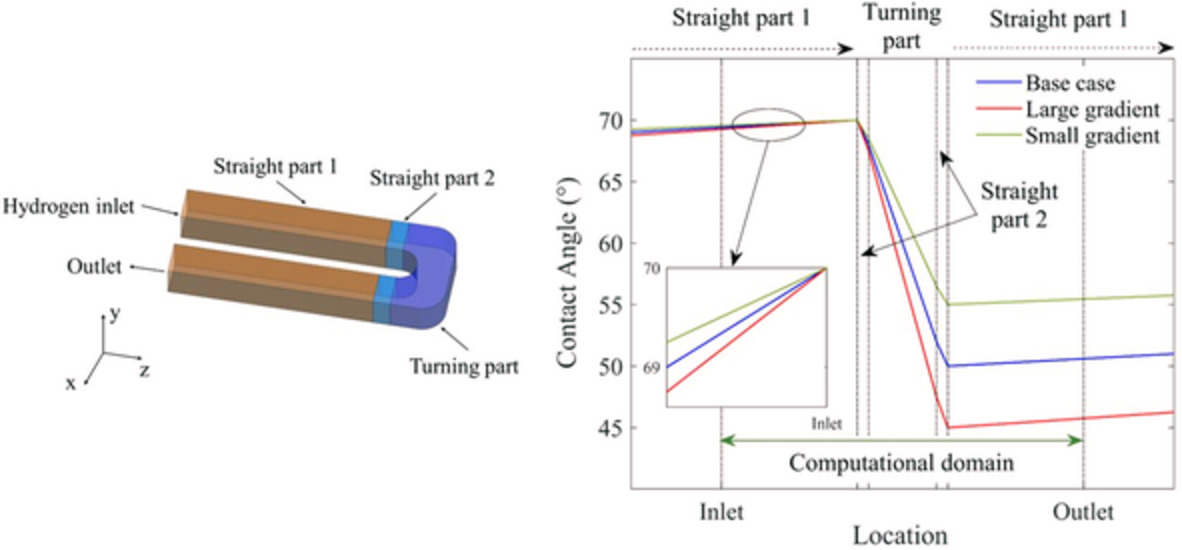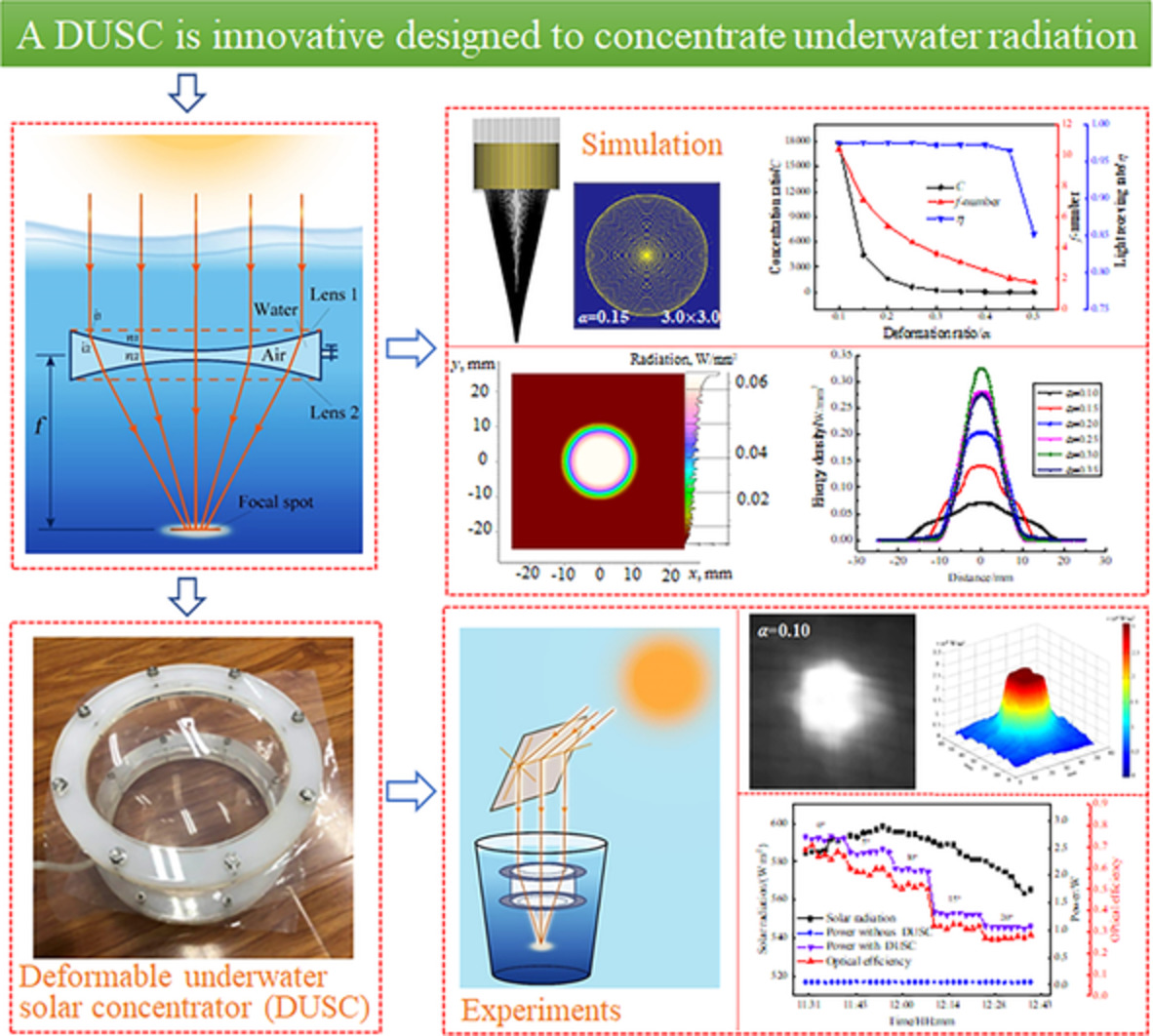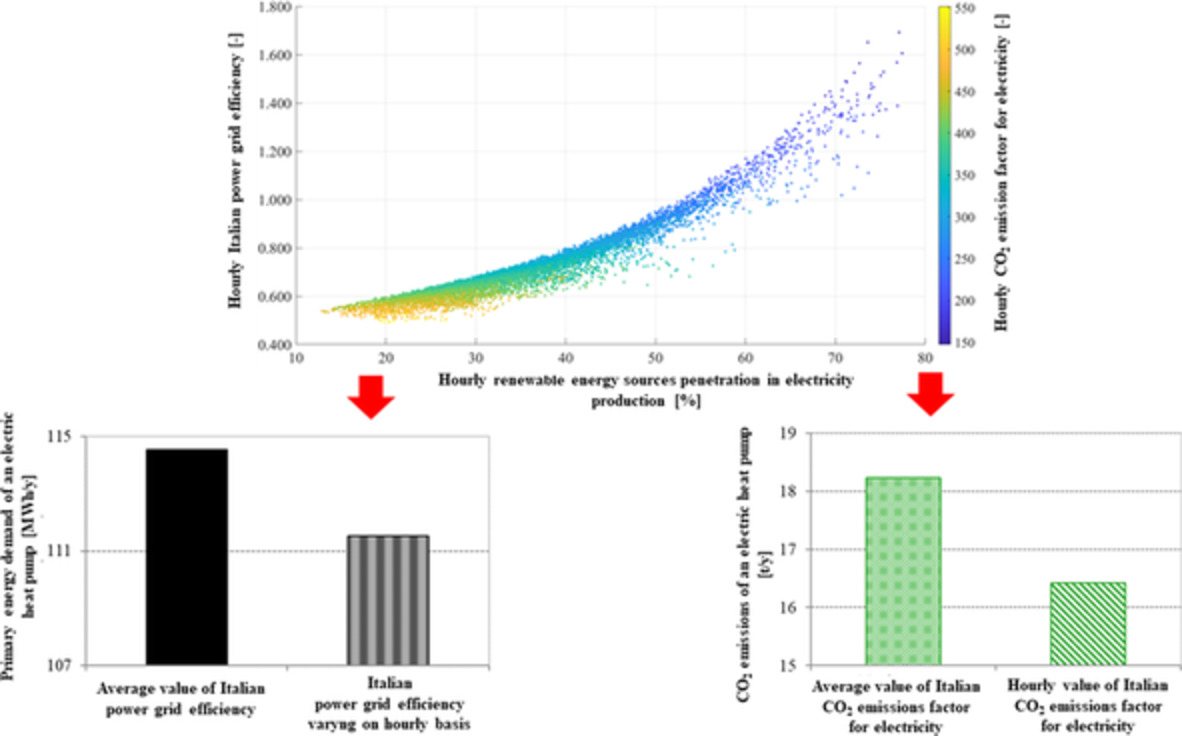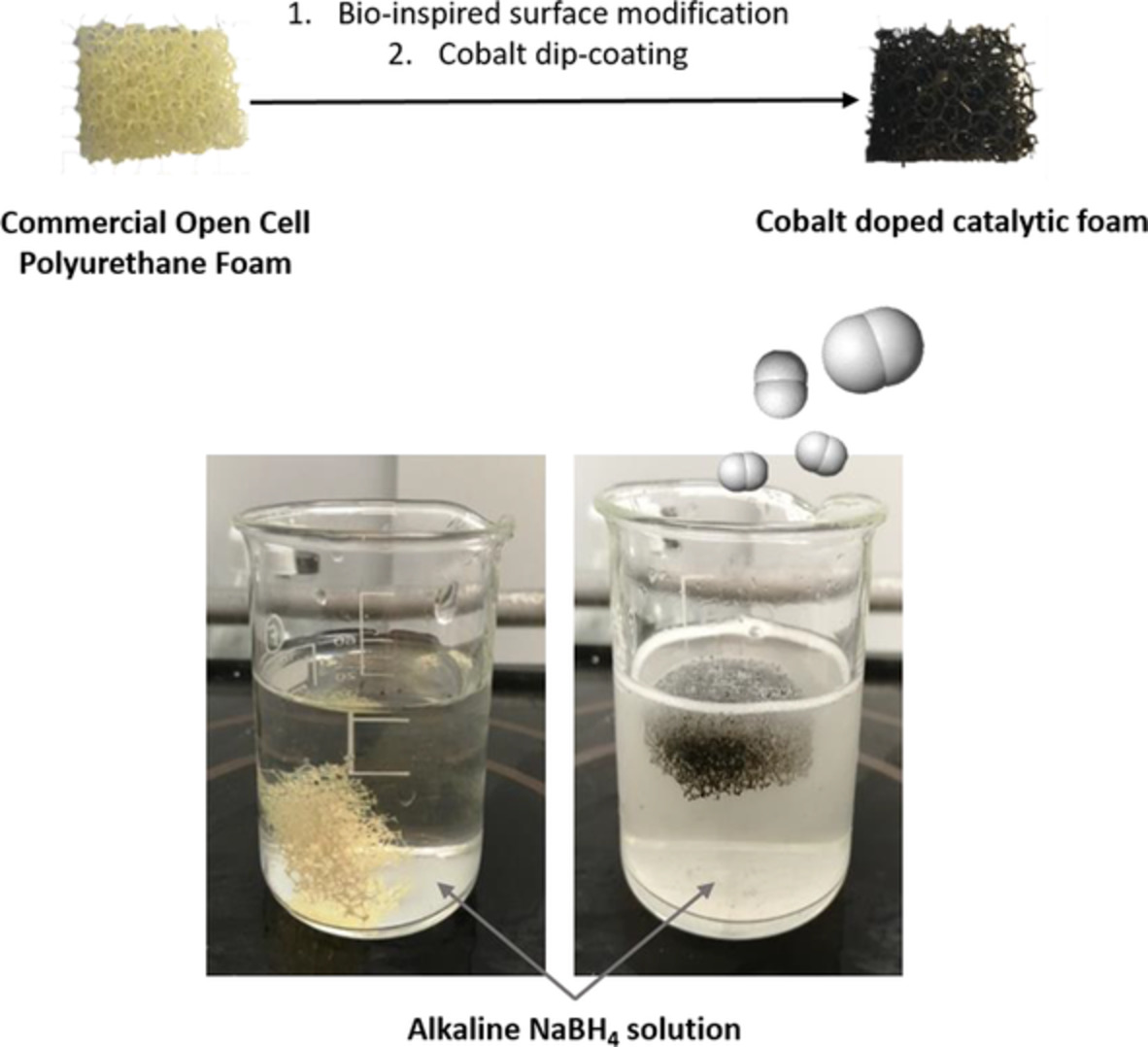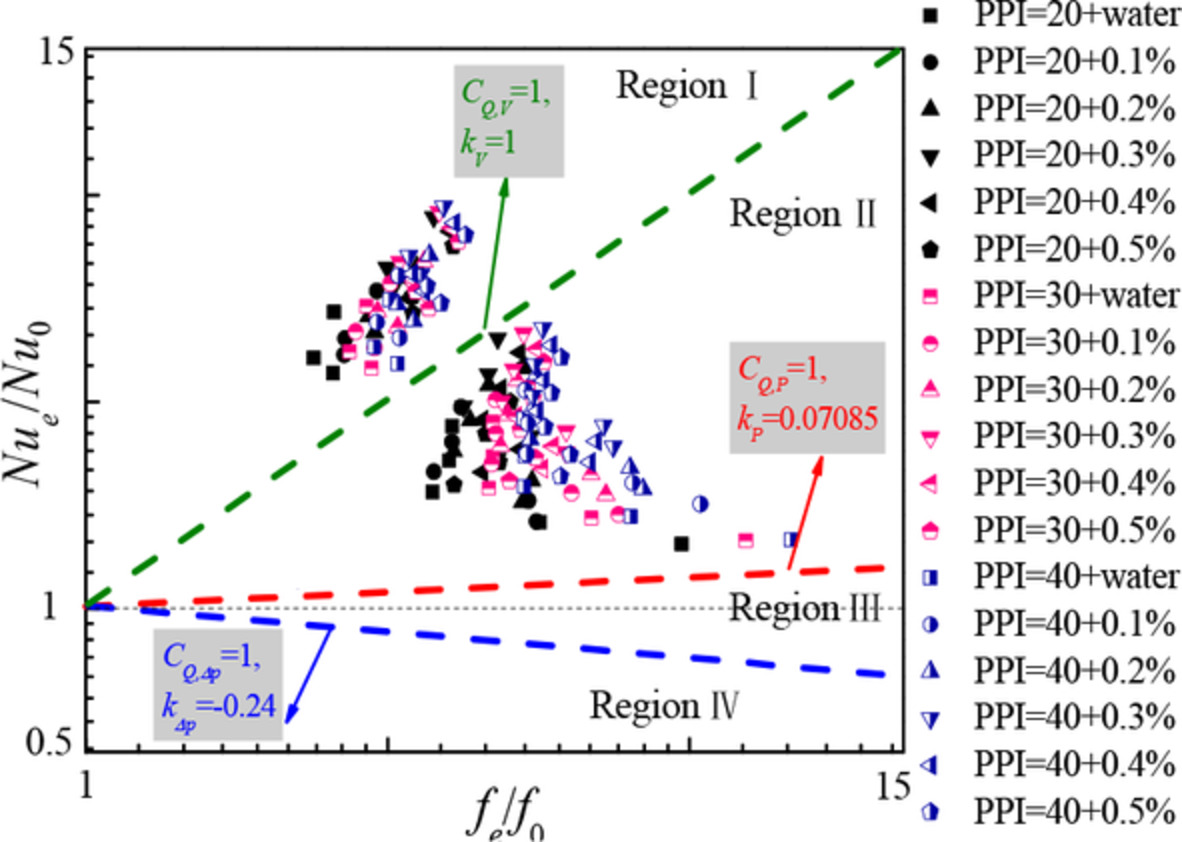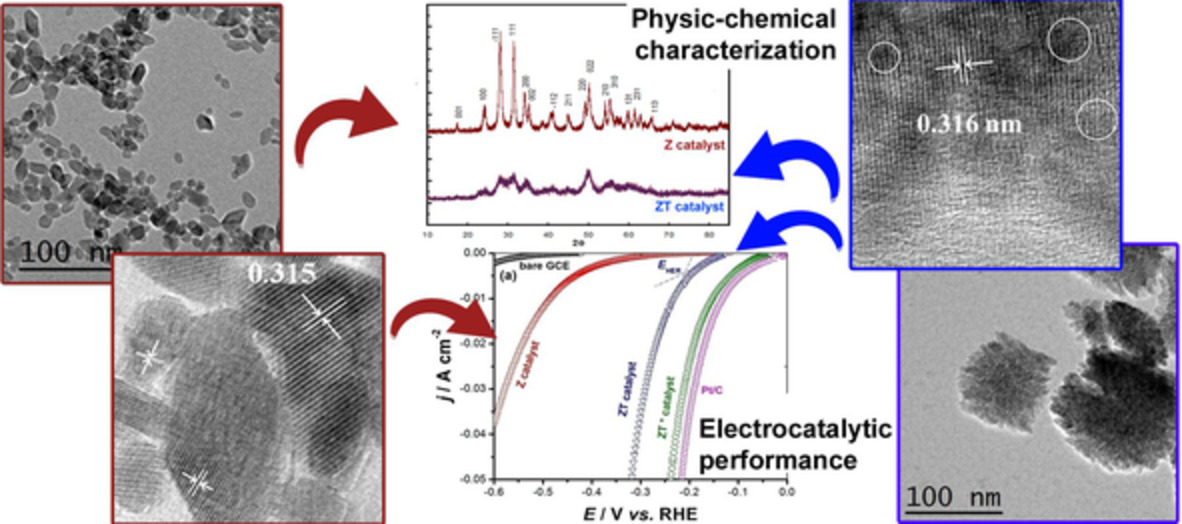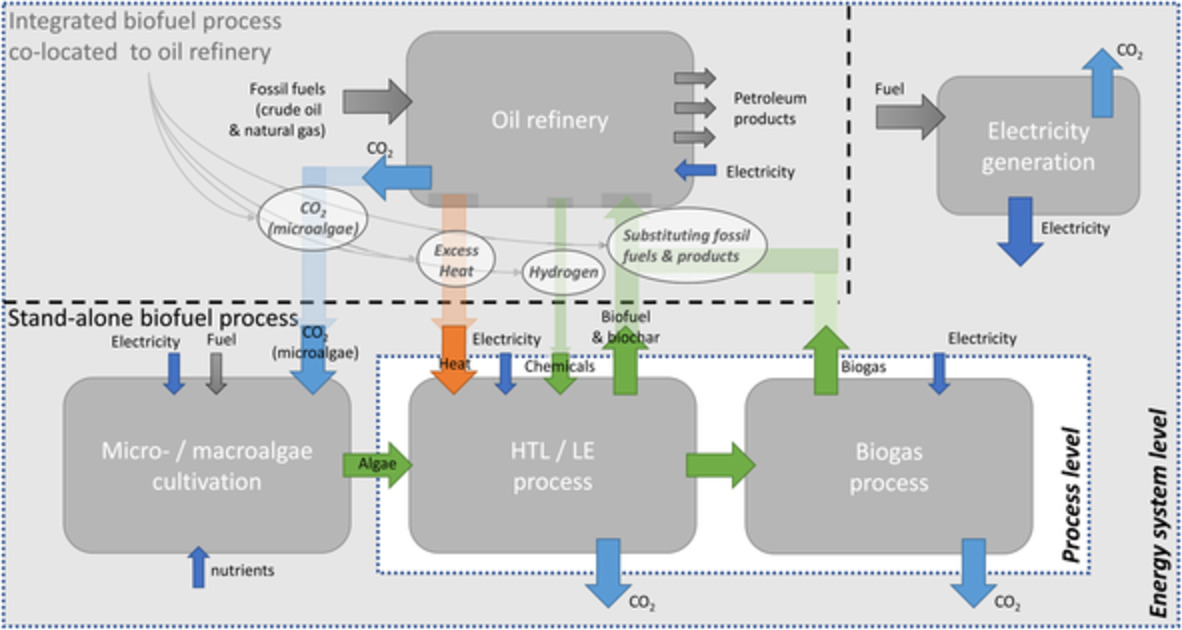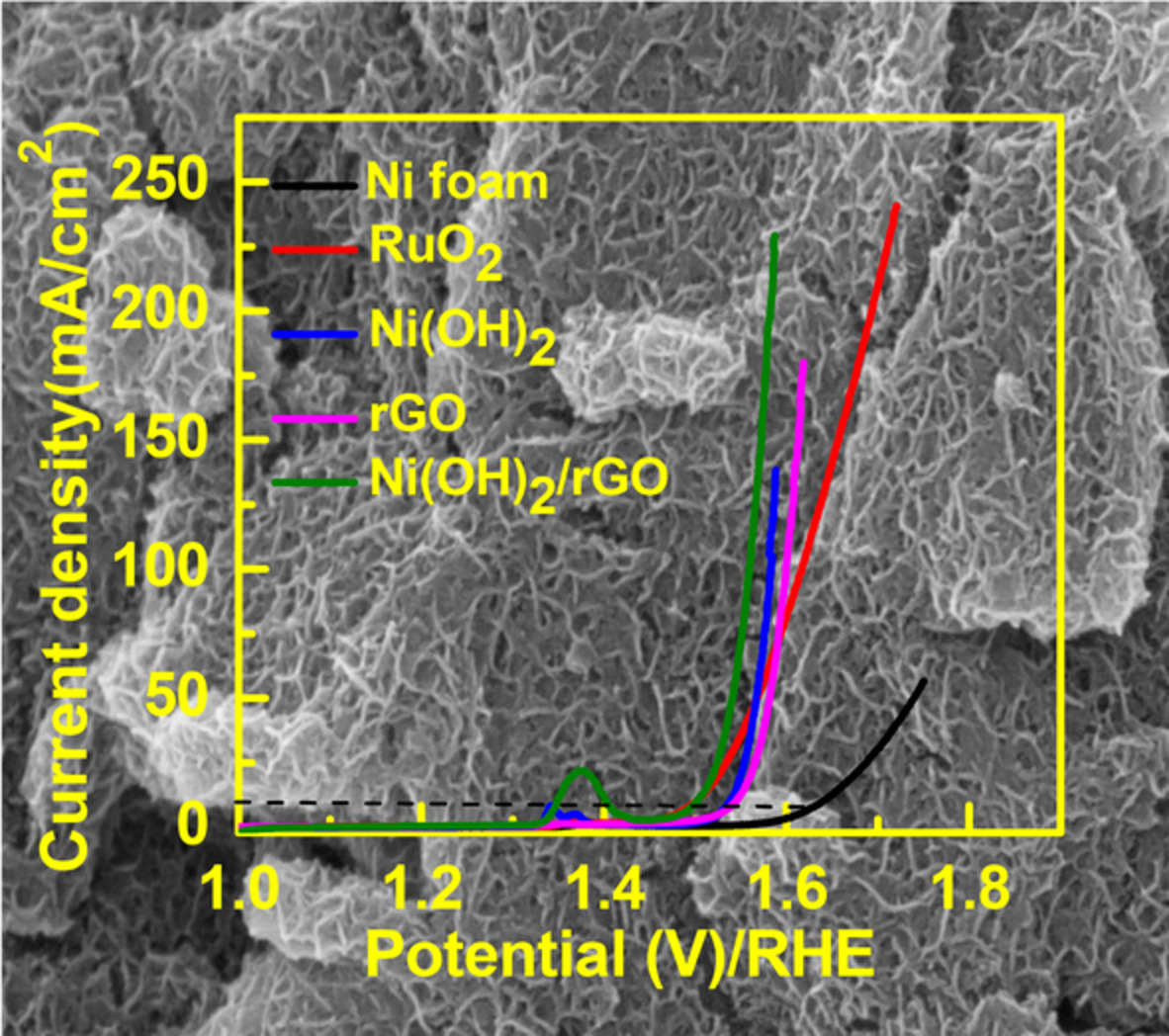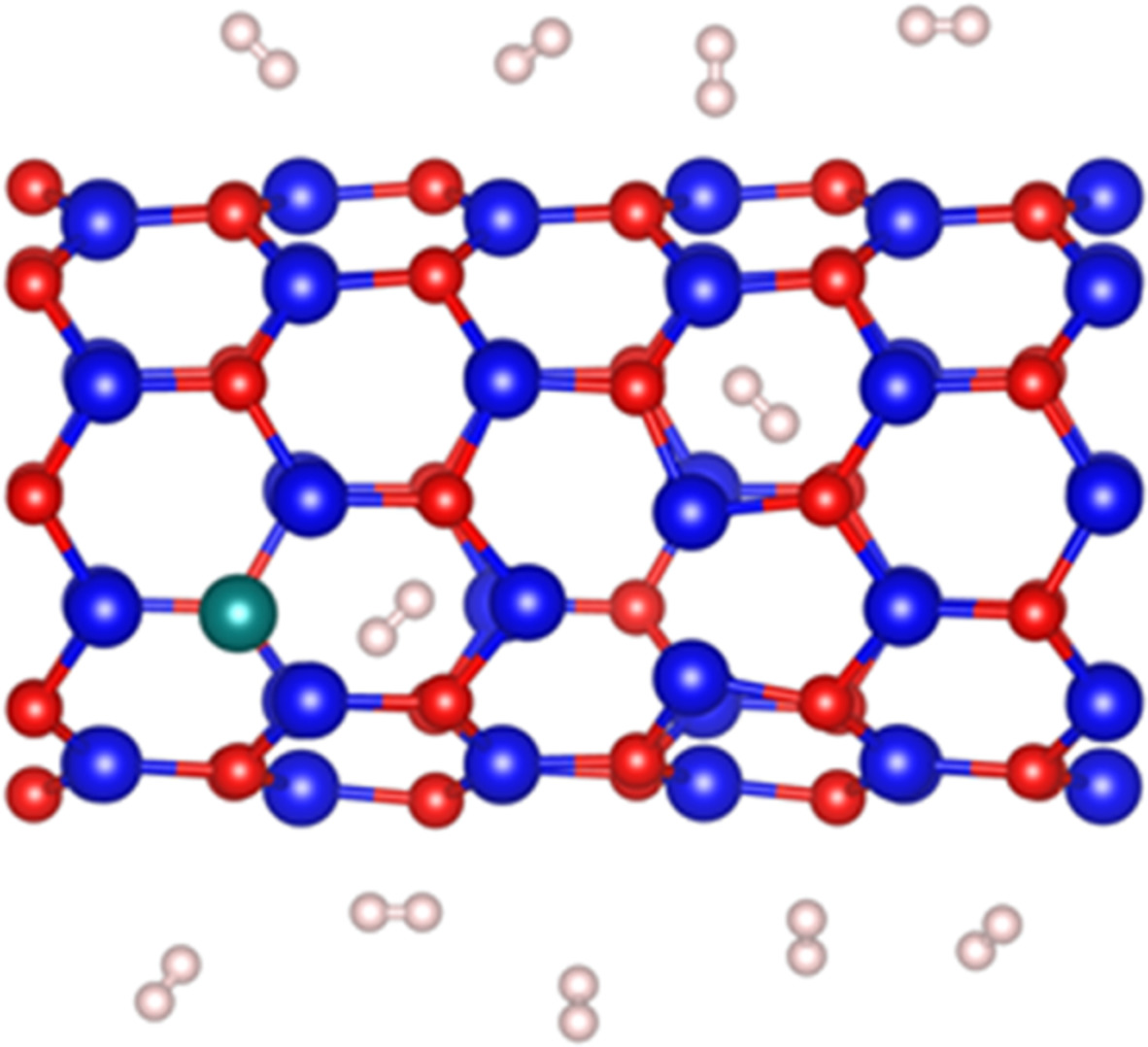Journal list menu
Export Citations
Download PDFs
Cover Image
- Page: i
- First Published: 09 October 2020
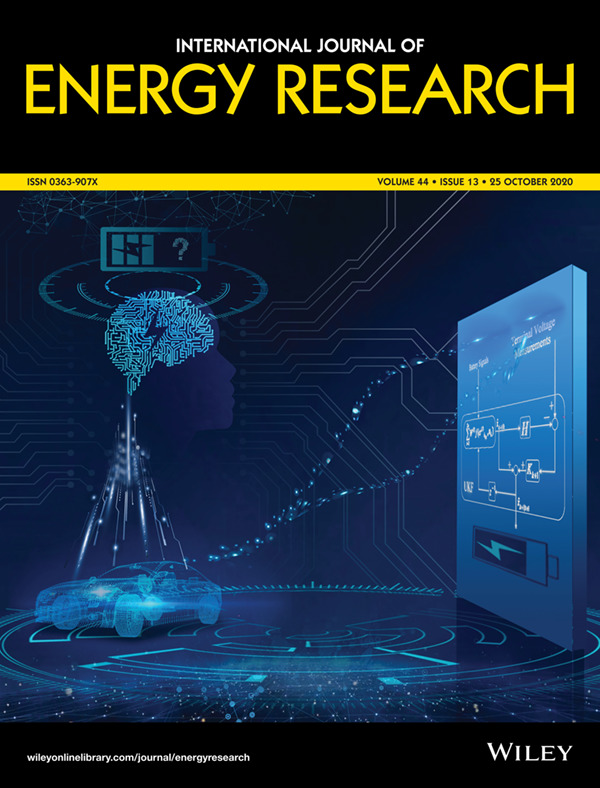
continuedThe cover image is based on the Research Article Neural network-based learning and estimation of battery state-of-charge: A comparison study between direct and indirect methodology by Wen Sun et al., https://doi.org/10.1002/er.5654.
Issue Information
- Pages: 9799-9803
- First Published: 09 October 2020
The role of co2 in improving sonic hydrogen production
- Pages: 9804-9807
- First Published: 18 August 2020
Review of innovative approaches of thermo-mechanical refrigeration systems using low grade heat
- Pages: 9808-9838
- First Published: 16 June 2020
The use of nickel oxide as a hole transport material in perovskite solar cell configuration: Achieving a high performance and stable device
- Pages: 9839-9863
- First Published: 15 June 2020
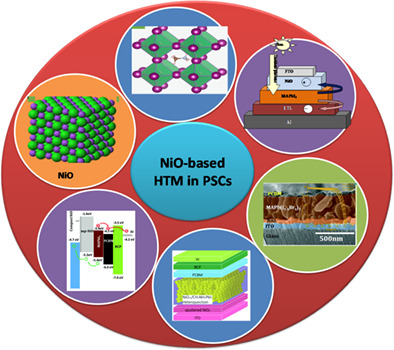
This work presents a review on the use of nickel oxide as a hole transport material in perovskite solar cell configuration towards achieving a high performance and stable device. This review covers the background introduction, operating principle, device architectures, parameters affecting the hole transport mechanisms, application areas and updated overview of the recent progress on the use of nickel oxide as hole transport material in perovskite devices.
Solar-thermal driven drying technologies for large-scale industrial applications: State of the art, gaps, and opportunities
- Pages: 9864-9888
- First Published: 06 July 2020
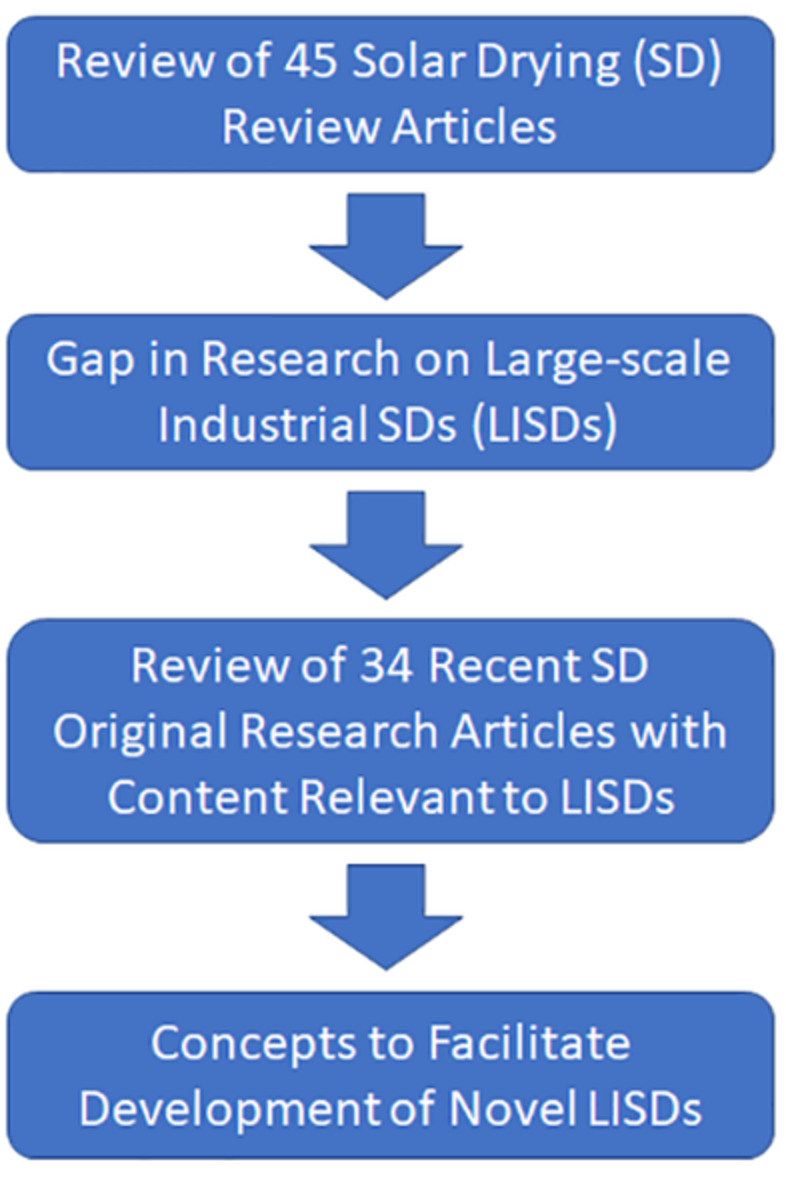
Content from 45 Review Articles on Solar Dryers analyzed and gap in research on Large-scale Industrial Solar Dryers (LISDs) identified. 34 Original Research Articles with content relevant to LISD analyzed and crossed with content from industrial drying literature. LISD Research Opportunities identified.
Recent trends in power management strategies for optimal operation of distributed energy resources in microgrids: A comprehensive review
- Pages: 9889-9911
- First Published: 12 July 2020
Overview of printing and coating techniques in the production of organic photovoltaic cells
- Pages: 9912-9931
- First Published: 08 July 2020

The organic photovoltaic cell (OPV) is composed of multiple layers, and some printing and coating techniques are more suitable than others for a certain type of layer. This paper aims to characterize and compare the most relevant coating and printing techniques that can be used in the manufacture of OPVs. The results show that the most used method for the processing of OPVs is spin-coating. In the studies found, rotation was used to coat the active layer, the electron transport layer and the hole transport layer. The techniques of pad printing, casting and meniscus are considered useful in the processing of the active layer. Regarding the deposition of the active layer, hole transport layer, electron transport layer and anode, the rotogravure, crack matrix, spraying and brushing techniques were satisfactory. Flexography has been used to form the active layer, electron transport layer and anode. Screen printing, inkjet printing and knife/blade coating were used in the processing of the active layer, hole transport layer, electron transport layer, anode and cathode. Both the double slot die coating, curtain coating and slide coating allows simultaneous processing of multiple layers. Techniques compatible with roll-to-roll processing are more likely to be at the center of OPVs in the future, thus making solar photovoltaic technology more competitive.
A game theoretic analysis of a closed-loop water-energy nexus: The effect of technology efficiency and market competition on the market equilibrium and social welfare
- Pages: 9932-9959
- First Published: 12 July 2020
Performance of building energy supply systems using renewable energy
- Pages: 9960-9973
- First Published: 29 June 2020
Thermo-economic analysis and optimization of a combined Organic Rankine Cycle (ORC) system with LNG cold energy and waste heat recovery of dual-fuel marine engine
- Pages: 9974-9994
- First Published: 13 July 2020
Improved electrochemical performance and durability of butane-operating low-temperature solid oxide fuel cell through palladium infiltration
- Pages: 9995-10007
- First Published: 07 July 2020

Simply infiltrating a secondary catalyst to the anode support of the thin-film-based solid oxide fuel cell (TF-SOFC) can secure both the fuel flexibility and the high performance. Infiltrated Pd forms an alloy with the main catalyst, Ni, at a temperature as low as 650 °C at both powder and unit cell levels, which enhances the steam reforming reaction of butane. The performance and durability at 600 °C reported in this work are among the highest reported for hydrocarbon-fueled SOFCs.
Study on the microstructures and thermal properties of SiO2@NaNO3 microcapsule thermal storage materials
- Pages: 10008-10022
- First Published: 05 July 2020
Performance of serpentine channel based Li-ion battery thermal management system: An experimental investigation
- Pages: 10023-10043
- First Published: 27 June 2020
Development and characterization of form-stable porous TiO2/tetradecanoic acid based composite PCM with long-term stability as solar thermal energy storage material
- Pages: 10044-10057
- First Published: 11 July 2020
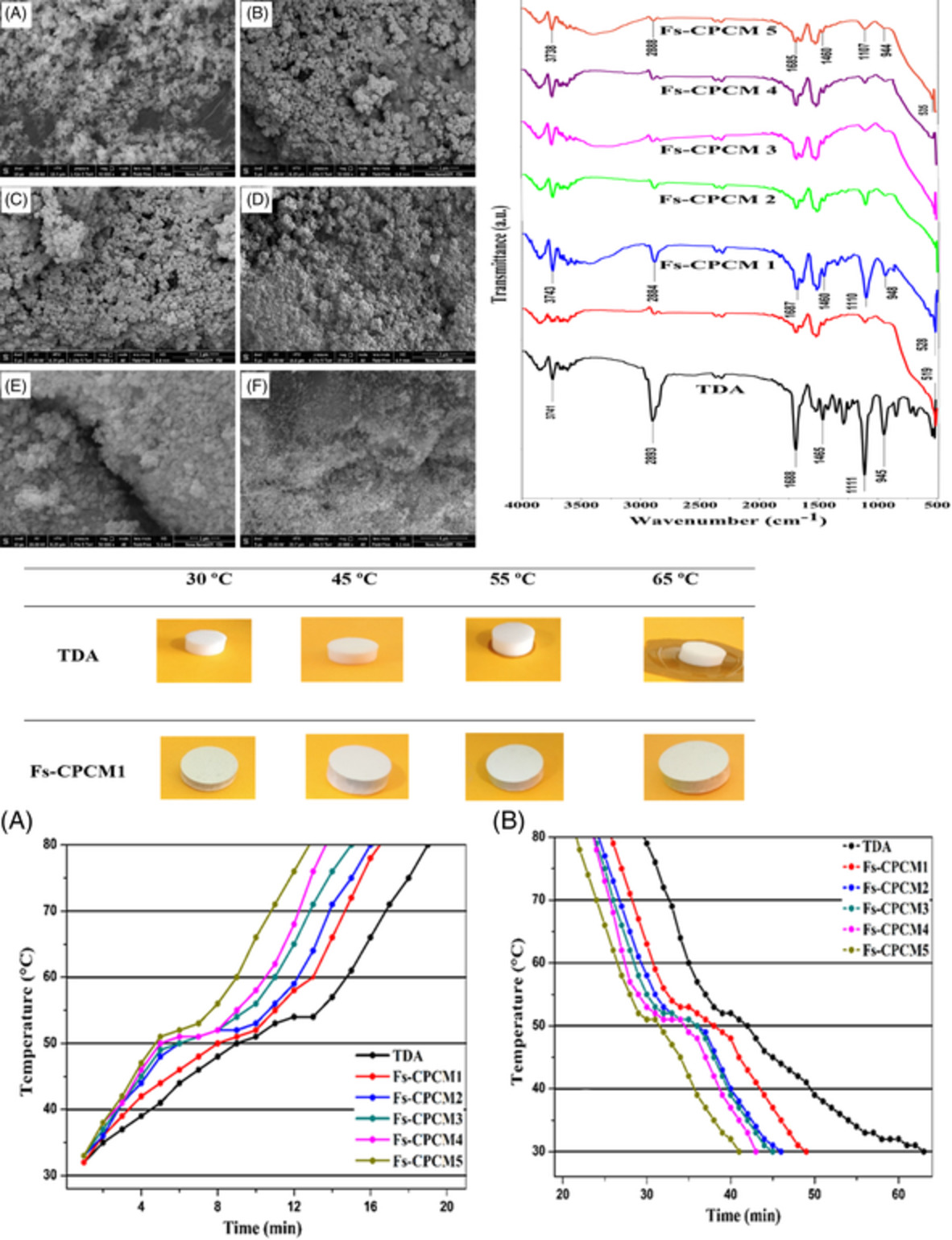
- TDA/TiO2 composite as form-stable phase change material (Fs-CPCM) with no leakage.
- Fs-CPCM possesses good thermal energy storage capacity (97.75 kJ/kg) with suitable melting temperature (52.04°C).
- FS-CPCM showed good thermal reliability, thermal durability, and chemical stability.
- TiO2 significantly enhanced thermal conductivity of TDA.
Identification and cultivation of hydrogenotrophic methanogens from palm oil mill effluent for high methane production
- Pages: 10058-10070
- First Published: 28 June 2020
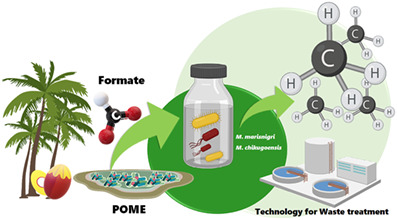
The investigation of volatile organic acids dynamics throughout the treatment process of palm oil mill effluent (POME) had led to the isolation of potential formate utilizing microbial consortia. After 25 days of culturing in formate synthetic medium, the consortium containing hydrogenotrophic methanogens; Methanoculleus marisnigri and Methanoculleus chikugoensis, uncultured bacteria, Aminobacterium sp., and Ruminobacillus xylanolyticum could produce the highest methane yield of 259 mL/g COD. The findings, here, can contribute to higher efficiency in palm oil mill wastewater treatment.
The potential of novel carbon nanocages as a carbon support for an enhanced methanol electro-oxidation reaction in a direct methanol fuel cell
- Pages: 10071-10086
- First Published: 12 July 2020

In this study, we introduce carbon nanocages (PtRu CNC) support for anodic Direct Methanol Fuel Cell. PtRu/CNC showed a maximum power density of 3.35 mW cm−2, which is 1.72 times higher than that of the PtRu/C commercial electrocatalyst. The higher performance of PtRu/CNC was attributed to the fact that it had the smallest bimetallic-Pt crystallite with a smooth distribution of bimetallic-Pt on its CNC support, as shown by FESEM
Flexible piezoelectric cum-electromagnetic-absorbing multifunctional nanocomposites based on electrospun poly (vinylidene fluoride) incorporated with synthesized porous core-shell nanoparticles
- Pages: 10087-10100
- First Published: 03 July 2020
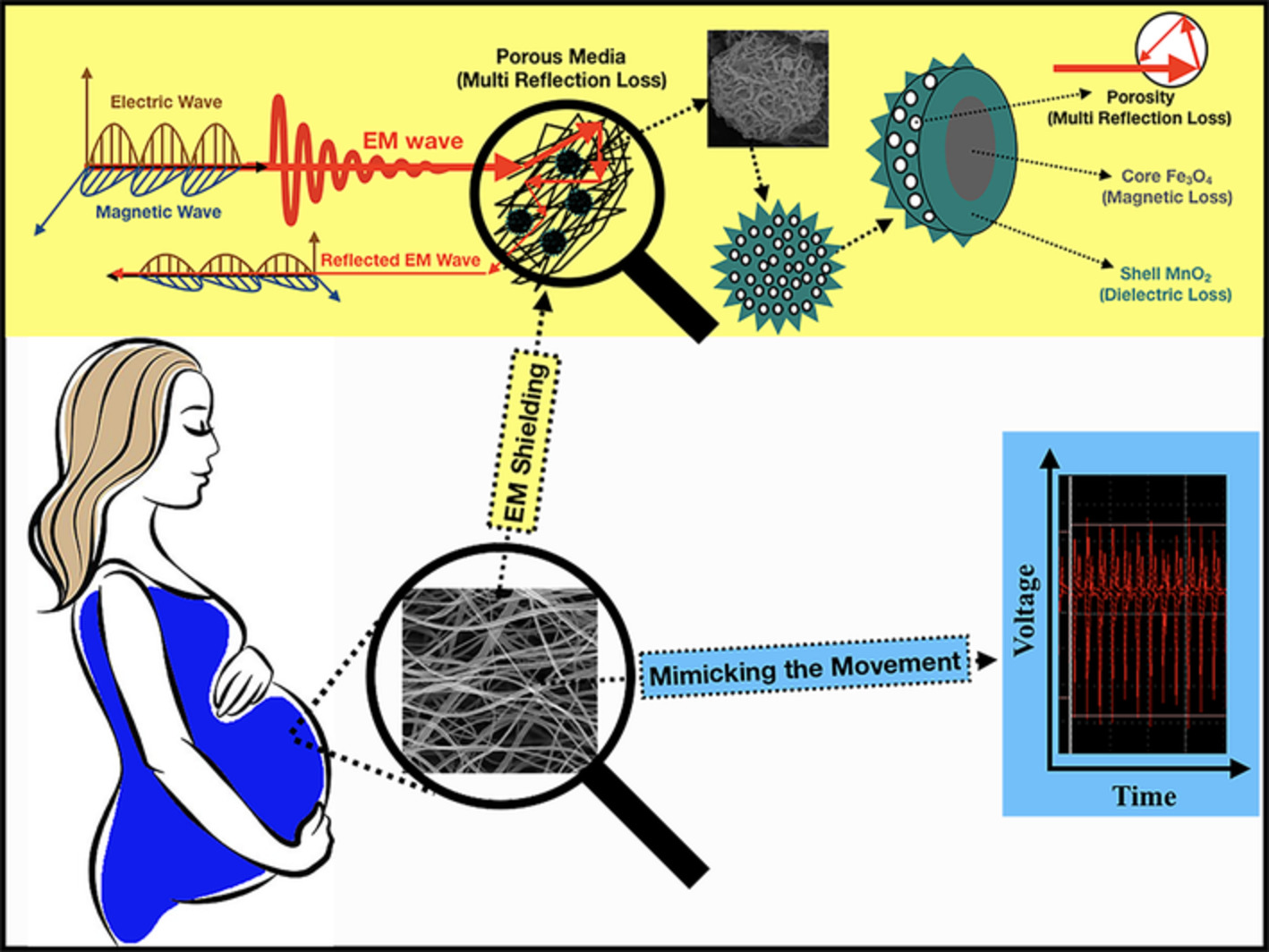
Porous core-shell Fe3O4@MnO2 nanoparticles (NPs) were synthesized, and the synthesized NPs dispersed in poly (vinylidene fluoride) by solution mixing method. Then, flexible, piezoelectric, and EM-sensitive multifunctional nanofibers were fabricated using the solution electrospinning technique. Extensive characterizations were performed on both synthesized NPs and electrospun mats. The results showed that the fabricated nanofibers have the potential to be used in fabricating flexible clothing capable of EM shielding, hybrid piezoelectric-electromagnetic harvesting, and mimic the health and movement pattern.
Shock tube studies on ignition delay and combustion characteristics of oxygenated fuels under high temperature
- Pages: 10101-10111
- First Published: 01 July 2020
Electrochemical properties of the CaNi5−xMnx electrodes synthesized by mechanical alloying
- Pages: 10112-10125
- First Published: 30 June 2020
Exergoeconomic and environmental investigation of an innovative poly-generation plant driven by a solid oxide fuel cell for production of electricity, cooling, desalinated water, and hydrogen
- Pages: 10126-10154
- First Published: 13 July 2020
Solving Nafion poisoning of ORR catalysts with an accessible layer: designing a nanostructured core-shell Pt/C catalyst via a one-step self-assembly for PEMFC
- Pages: 10155-10167
- First Published: 13 July 2020

A novel way to optimize the ionomer/Pt interfacial structure to alleviate ionomer poisoning effect has been proposed. It was achieved via a porous coating derived from Nafion on Pt particles which could reduce ionomer/Pt interface and made Pt particles accessible to protons and oxygen. The new catalyst with porous coating exhibits superior ORR and better cell performance.
Toward high performance solid-state lithium-ion battery with a promising PEO/PPC blend solid polymer electrolyte
- Pages: 10168-10178
- First Published: 16 July 2020
The significance of anti-fluorite Cs2NbI6 via its structural, electronic, magnetic, optical and thermoelectric properties
- Pages: 10179-10191
- First Published: 01 July 2020
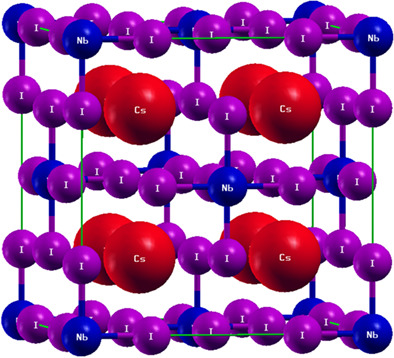
Cs2NbI6, a K2PtCl6 type compound is half-metallic ferromagnet having excellent physical properties. It has 100% spin polarization at Fermi level, as; it is metallic in one spin state and semiconducting in other spin state. Due to versatile character, it can be utilized for multifunctional applications such as solar cells, thermo-power generators and spintronics.
Porous activated carbon monolith with nanosheet/nanofiber structure derived from the green stem of cassava for supercapacitor application
- Pages: 10192-10205
- First Published: 08 July 2020

Porous activated carbon in monolith forms were prepared from the low cost and environmentally friendly precursor of green stem cassava (GSC), through a combination of chemical and physical activation processes. Therefore, the synthesized porous activated carbon exhibits a micropores-mesopores combination, and the optimized sample demonstrated nanosheet and nanofiber structures. The results show a high electrochemical behavior with specific capacitance, energy and power densities of 164.58 F g−1, 22.86 Wh kg−1 and 82.38 W kg−1, respectively.
Nickel hexacyanoferrate film coated pencil graphite electrode as sensor and electrode material for environment and energy applications
- Pages: 10206-10221
- First Published: 05 July 2020
Evaluation of hybrid solar-wind-hydrogen energy system based on methanol electrolyzer
- Pages: 10222-10237
- First Published: 17 July 2020
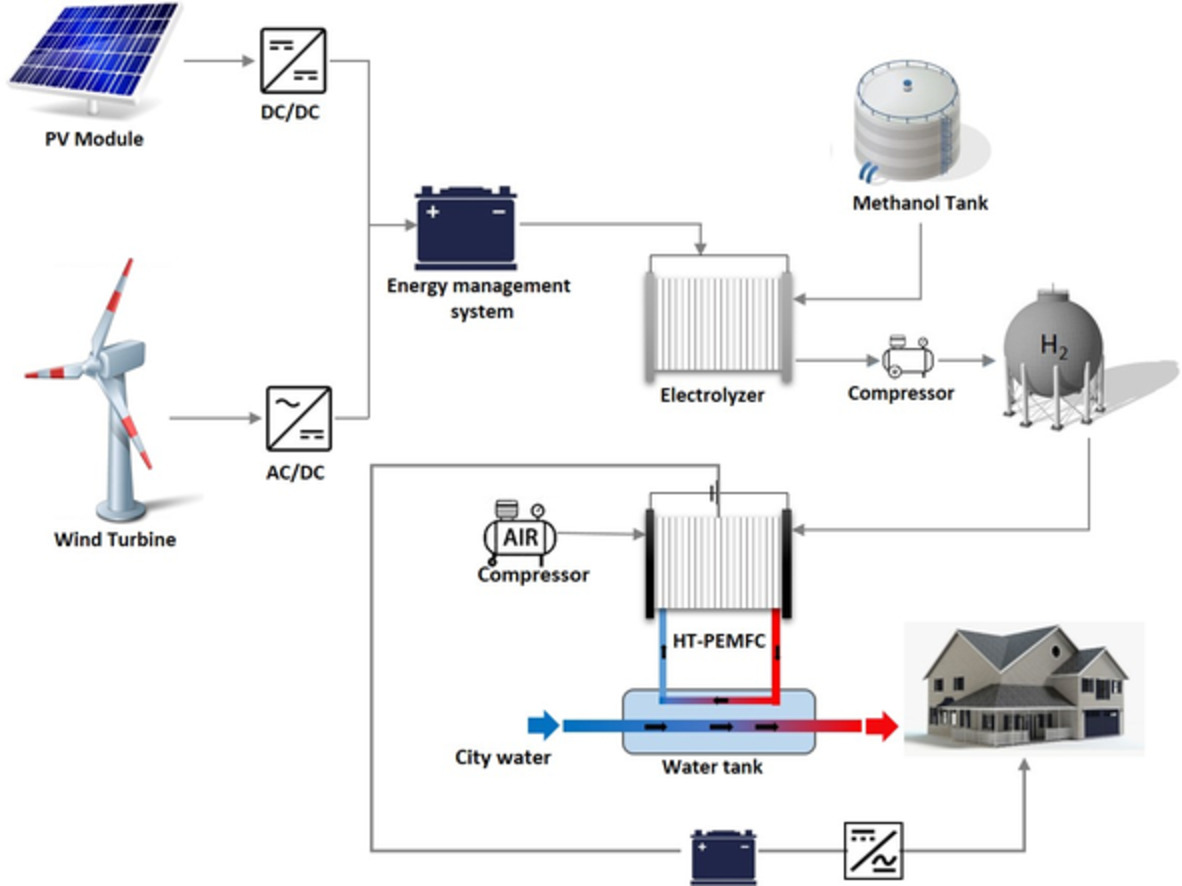
- ME based PV/WT/HT-PEMFC hybrid energy system was designed to meet both the electricity and heat requirement of a grid independent house.
- The levelized cost of energy (LCOE) of system was calculated as 0.25 $/kWh with CHP application.
- The economic viability of ME based PV/WT/HT-PEMFC hybrid system was shown by LCOE.
Graphene/β-MnO2 composites—synthesis and its electroanalytical properties study in the Mg storage battery
- Pages: 10238-10250
- First Published: 12 July 2020
Platinum nanoparticles decorated carbon nanofiber hybrids as highly active electrocatalysts for polymer electrolyte membrane fuel cells
- Pages: 10251-10261
- First Published: 12 July 2020
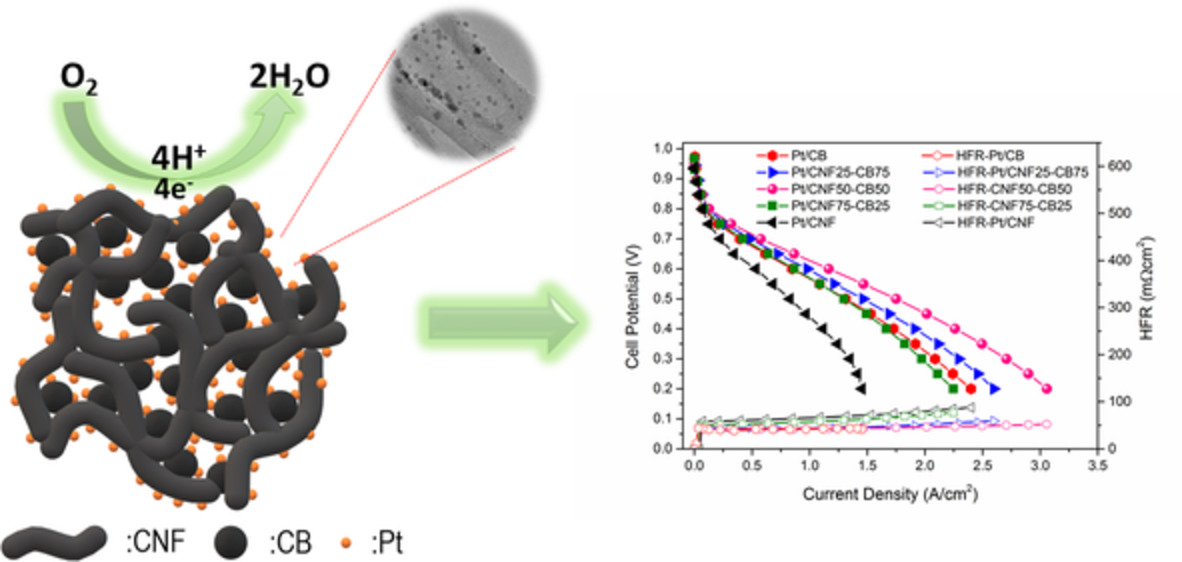
In the current study, Pt nanoparticles (NPs) were decorated on a new hybrid network, comprising of carbon nanofiber (CNF) and carbon black (CB), by means of a facile and efficient microwave (MW) assisted reduction method. All synthesized electrocatalysts were characterized to elucidate chemical, morphological structures and electrocatalytic activity. Hybrid electrocatalyst exhibited enhanced fuel cell performance with 907 mW.cm−1 maximum power density.
Li-ion battery state of health estimation through Gaussian process regression with Thevenin model
- Pages: 10262-10281
- First Published: 17 July 2020

- A novel resistance-based aging feature is extracted from the Thevenin model to describe battery capacity degradation;
- Considering the influence of temperature, Box-Cox transformation is introduced to improve the performance of the aging feature;
- A data-driven battery state of health estimator is established, Gaussian Process Regression, backpropagation network, and support vector regression are implemented to verify the generality of the proposed estimator.
Numerical investigation of water dynamics in a novel wettability gradient anode flow channel for proton exchange membrane fuel cells
- Pages: 10282-10294
- First Published: 13 July 2020
A thermo-stable poly(propylene carbonate)-based composite separator for lithium-sulfur batteries under elevated temperatures
- Pages: 10295-10306
- First Published: 08 July 2020
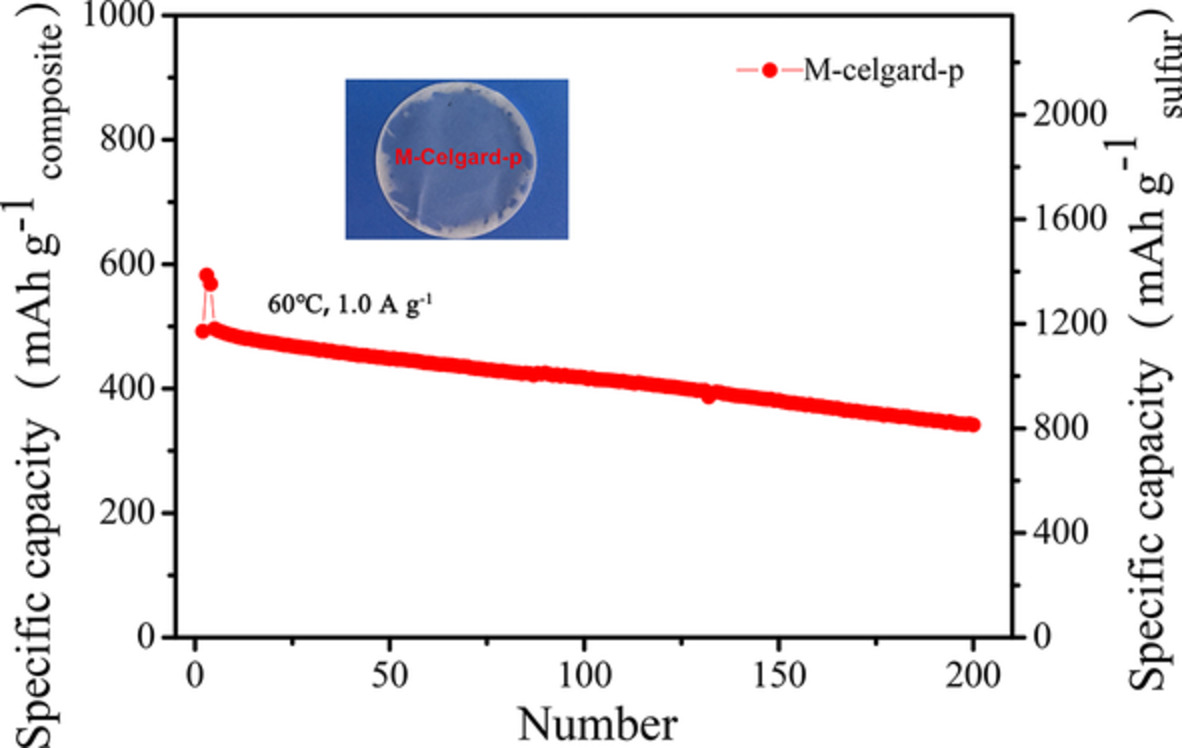
A thermo-stable separator was prepared by a simple dipping method for Li-S batteries, in which a layer of silicon dioxide-poly (propylene carbonate) based electrolyte with a high ionic-conductivity of 1.03 × 10−4 S cm−1 is coated on the commercial separator. The composite separator can not only block the shuttle of polysulfides but also improve the battery stability under elevated temperatures. As a result, the Li-S batteries using this separator exhibit high capacity retention of 69.4% after 200 cycles at 60 °C.
Neural network-based learning and estimation of battery state-of-charge: A comparison study between direct and indirect methodology
- Pages: 10307-10319
- First Published: 16 July 2020
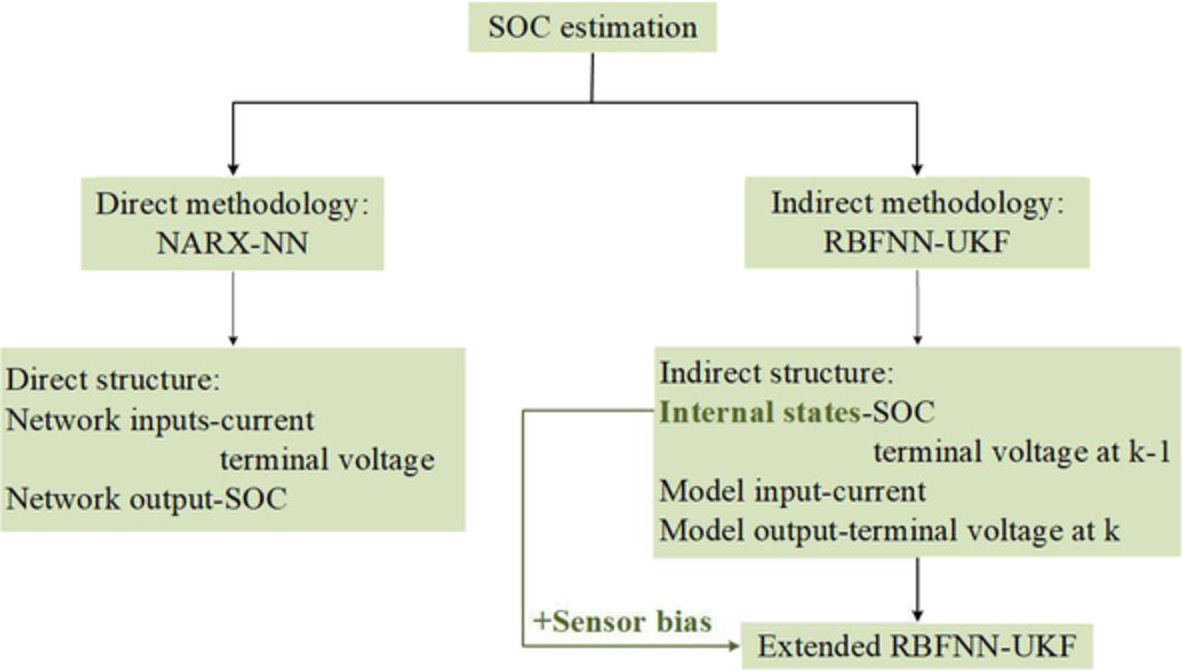
The direct and indirect neural network-based structures for learning and estimation of battery state-of-charge (SOC) are proposed, first with SOC as network output and second with the one as an internal state. Experimental results demonstrate that both estimators can achieve accurate SOC estimation for regular cases, in spite of the inaccurate initial conditions. Moreover, the cases with sensor bias can be well accommodated in the indirect structure by extending the sensor bias as an augmented state, realizing the accurate estimation of SOC together with unknown sensor bias.
Design and experimental verification on a deformable underwater solar concentrator with bi-layer film structure
- Pages: 10320-10332
- First Published: 06 July 2020
A novel approach to improve the performance of solar-driven Stirling engine using solar-driven ejector cooling cycle
- Pages: 10333-10353
- First Published: 20 July 2020
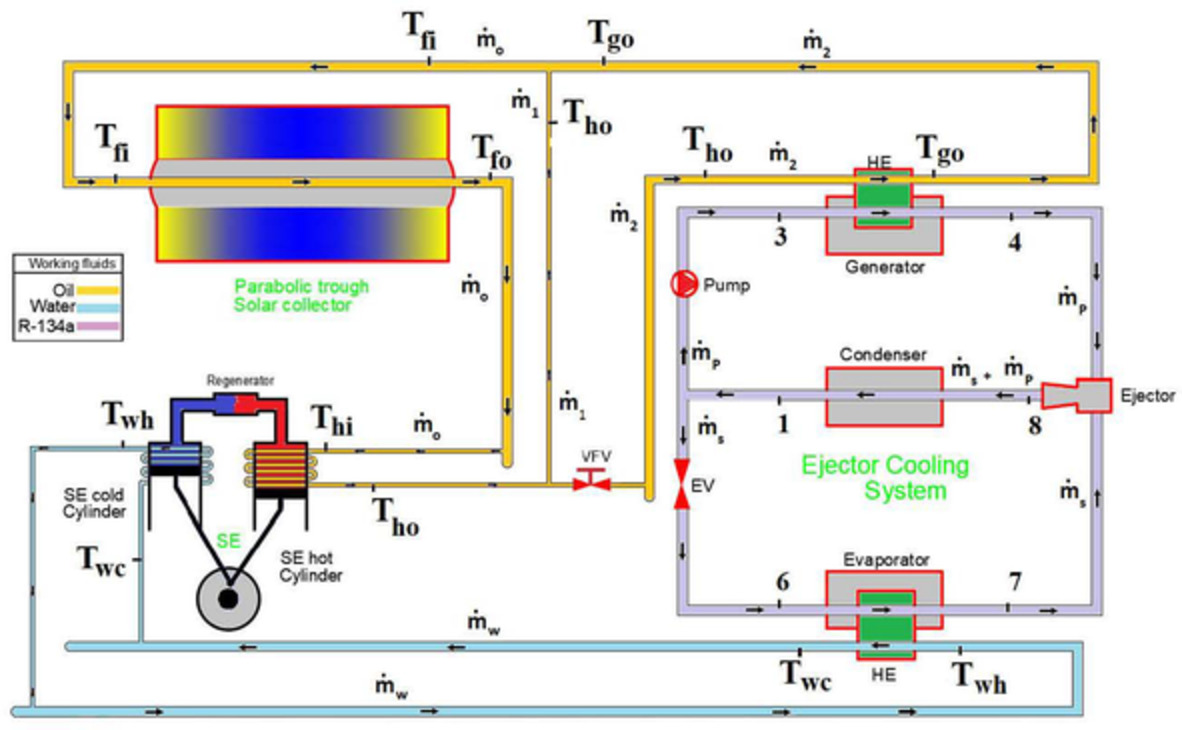
A novel approach to improve the performance of a solar-driven Stirling engine by using a solar-driven ejector cooling cycle is proposed and evaluated. The concentrated solar energy is split into two parts: The first part is used to drive the Stirling engine and the second part to derive the ejector cooling system. The cooling produced in the ejector cooling cycle is used to cool the Stirling engine in order to enhance its efficiency.
Synthesis and characterization of poly 2-N-acrylamido-2-methyl−1-propane sulfonic acid functionalized graphene oxide embedded electrolyte membrane using DOE for PEMFC
- Pages: 10354-10377
- First Published: 11 July 2020
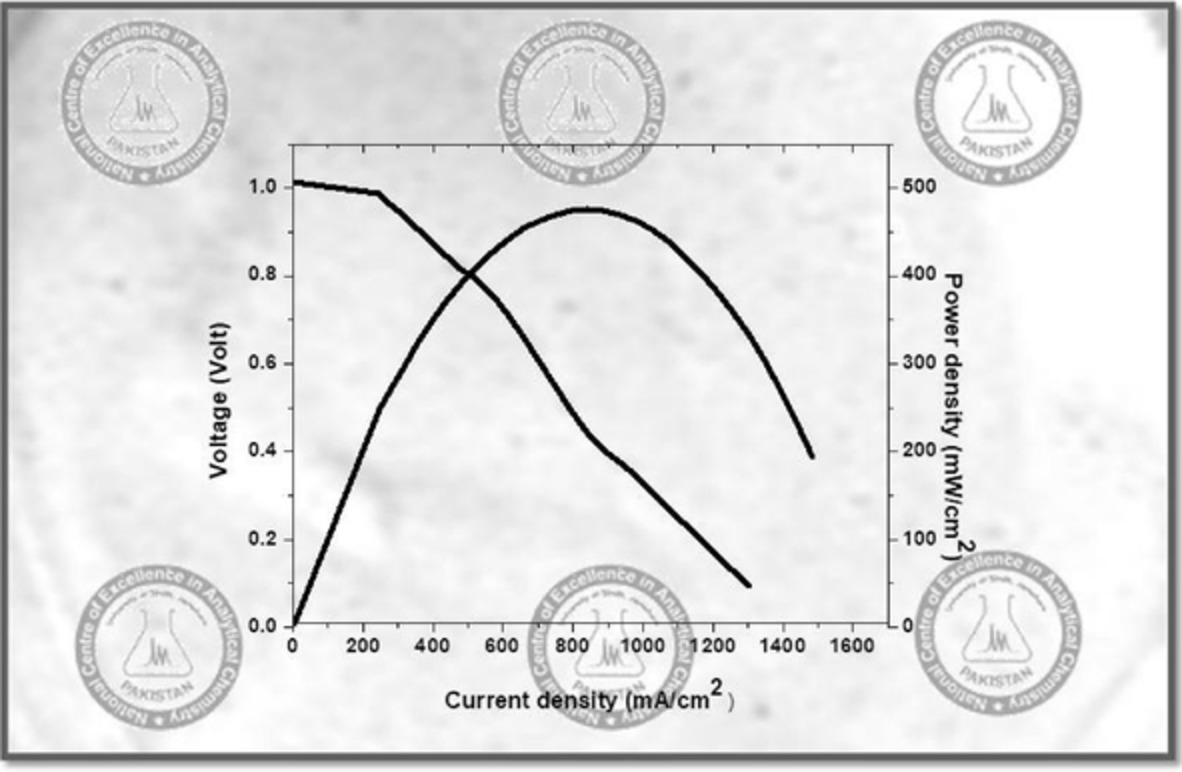
The mixed matrix membrane using 2-N-acrylamido-2-methyl-1-propane sulfonic acid modified graphene oxide nanocomposite (PAMPS-mGO), Carboxylated poly (vinyl chloride) (CPVC), and poly 2-N-acrylamido-2-methyl-1-propane sulfonic acid (PAMPS) was prepared for PEM fuel cell applications. The effect of amounts of membrane precursors was optimized using DOE. The membrane with excellent fuel cell performance, proton conductivity, young modulus and elongation break percentage, water uptake percentage at elevated temperatures, ion exchange capacity and oxidative stability was obtained using PAMPS-mGO, CPVC and PAMPS.
Ordinary clay as a support of nickel catalyst for steam reforming of acetic acid: Impacts of pretreatments of clay on catalytic behaviors
- Pages: 10378-10393
- First Published: 13 July 2020
Thermodynamic performance of absorption-compression hybrid refrigeration cycles based on lithium nitrate+1-butyl-3-methylimidazolium nitrate/water working fluid
- Pages: 10394-10413
- First Published: 08 July 2020

The generator temperatures of both hybrid cycles based on LiNO3-[BMIM]NO3/H2O were lower than that using the other working fluids. At different refrigeration temperatures, the generator temperatures were reduced about 7°C and 10°C for the single effect and double effect, respectively, in comparison with LiBr/H2O. Under the giving operating conditions, COP and ECOP of the both ACHR cycles were increased slightly compared with other working fluids. Therefore, LiNO3-[BMIM]NO3/H2O has a great potential to be used as an alternative working fluid in the absorption-compressed hybrid refrigeration system.
Enhanced thermal performance analysis of buried heat transfer tubes thermal storage system filled with microcapsule particles
- Pages: 10414-10429
- First Published: 13 July 2020
Numerical simulation of heat-pipe and folded reformers for efficient hydrogen production through methane autothermal reforming
- Pages: 10430-10441
- First Published: 11 July 2020
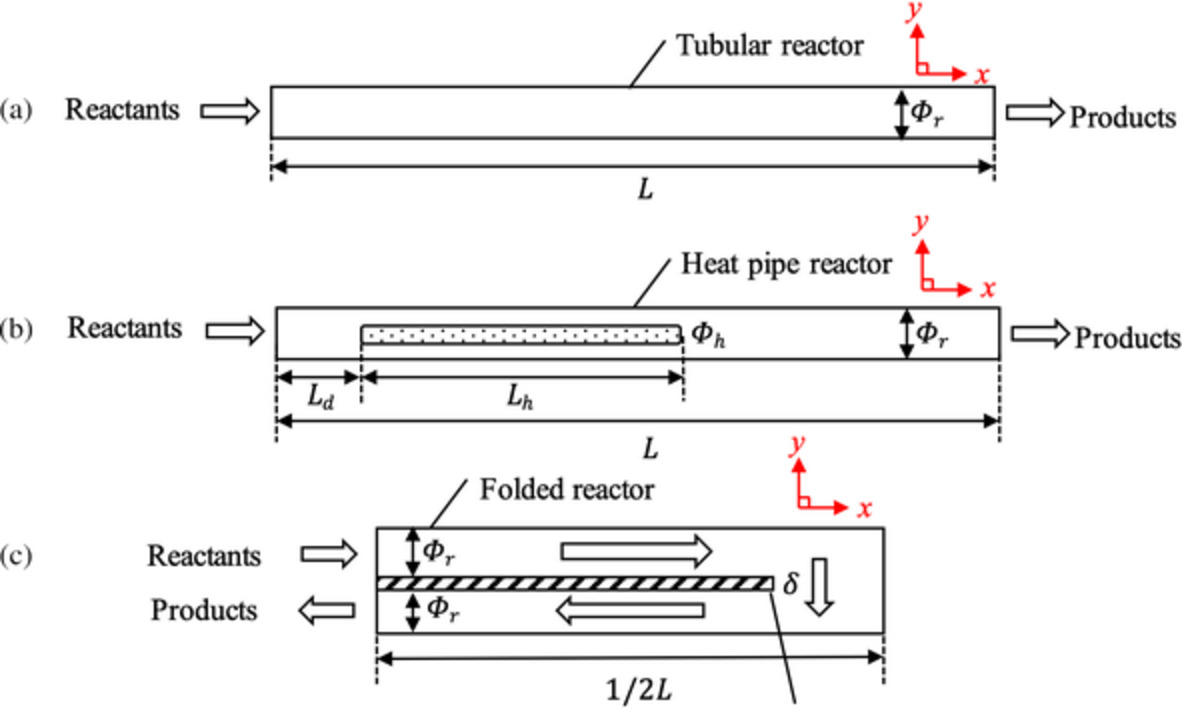
In this work, methane autothermal reforming in heat-pipe and folded reactor were compared to that of a tubular reactor. Results show that the performance of novel reactors are superior to the tubular reactor, and the optimal hydrogen yield of the folded reactor increased by 2.57% compared to the heat pipe reactor. The performance of the heat pipe reactor depends on the length and position of the heat pipe; the characteristics of the folded reactor depend on the material and thickness of the intermediate plate.
Improved dark fermentation of cane molasses in mesophilic and thermophilic anaerobic fluidized bed reactors by selecting operational conditions
- Pages: 10442-10452
- First Published: 13 July 2020
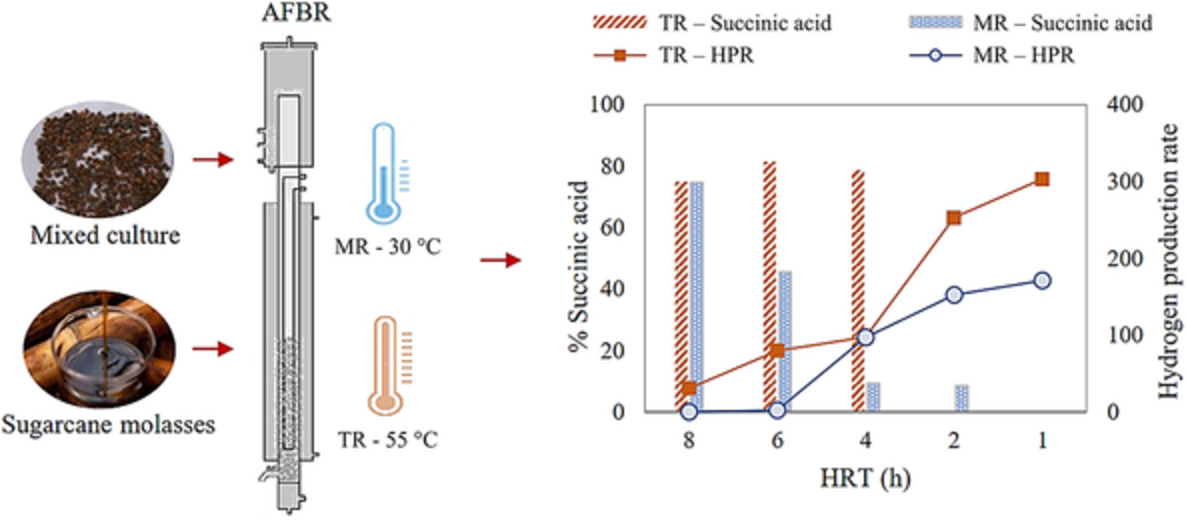
To our knowledge, this is the first study to compare mesophilic and thermophilic conditions for the continuous dark fermentation of sugarcane molasses in anaerobic fluidized bed reactors using different mixed cultures. Based on the results observed, the variation of hydraulic retention time can select the microbial populations and the main metabolic pathways between succinic acid and hydrogen production routes in high-rate mesophilic and thermophilic reactors. This enables the adoption of precise operational conditions depending on the targeted product.
Multi-criteria thermoeconomic and thermodynamic assessments of the desalination-integrated two-phase liquid-immersion data center cooling system
- Pages: 10453-10470
- First Published: 23 July 2020
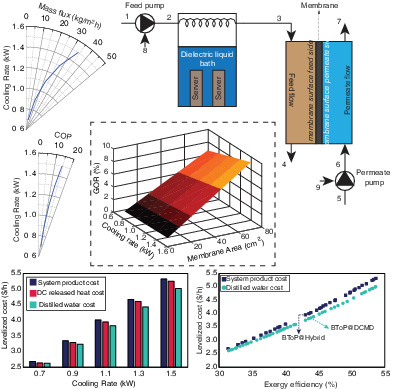
- We proposed an original hybrid energy system by utilizing the waste heat of a data center cooling unit in a thermal-driven desalination process.
- A two-phase liquid-immersion cooling system, which is one of the most recent and efficient data center cooling solutions thanks to its high heat flux removal performance for the rapidly developed Information and Communication Technology facilities such as cloud computing and big data, is combined with the direct contact membrane distillation module (a thermal-driven desalination system) and the proposed hybrid design is completely different than the previously presented data center waste heat studies.
- The hybrid design has demonstration potential in real life as an interdisciplinary solution that can be a beneficial way for the engineering community in the energy and environment sectors; hence, we do not only perform classical thermodynamic assessment, but also carry out an interdisciplinary thermoeconomic approach with the multiobjective optimization procedure.
Environmental impact assessment of green energy systems for power supply of electric vehicle charging station
- Pages: 10471-10494
- First Published: 13 July 2020
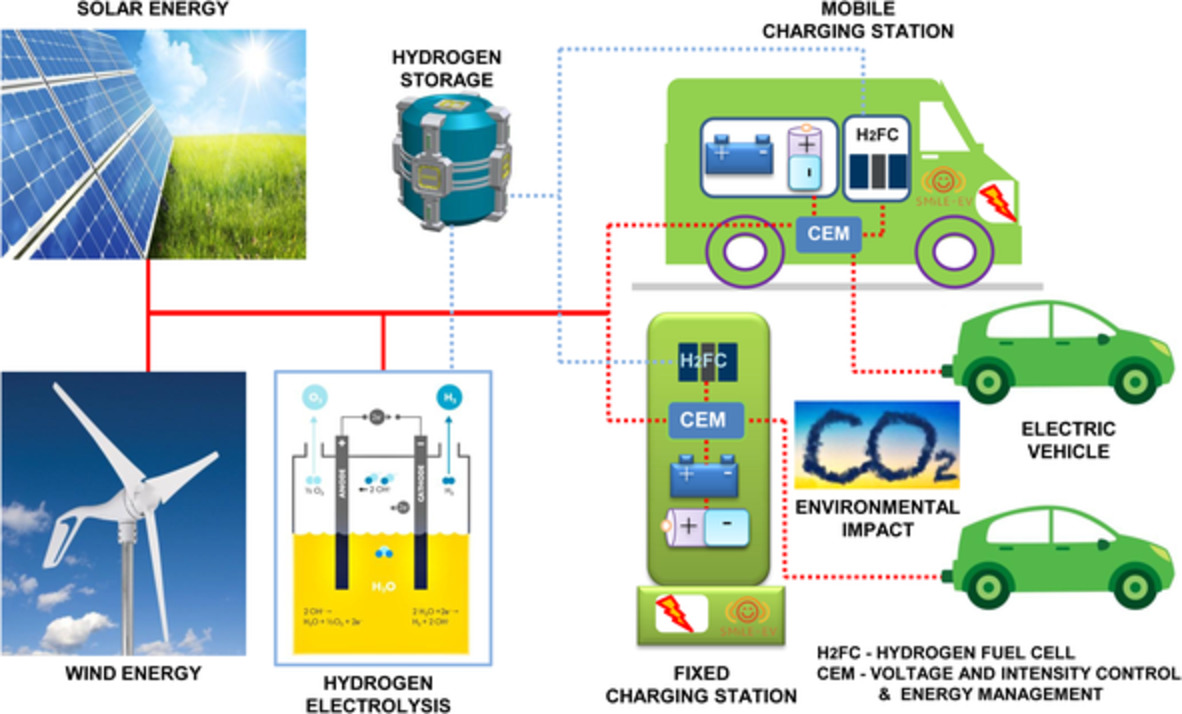
This research article fills the gap in the literature by assessing the environmental impact from the perspective of CO2 emissions embedded in alternative energy systems and estimating the environmental benefits of their implementation in the power supply of electric vehicles charging stations from the perspective of avoided CO2 emissions compared to the classic electricity supply grid. This study was carried out within the complex project “Intelligent conductive charging stations, fixed and MobiLe, for electric propulsion transport”–(SMiLE-EV).
Phase change material impregnated wood for passive thermal management of timber buildings
- Pages: 10495-10505
- First Published: 16 July 2020
Ionanofluid plasticized electrolyte with improved electrical and electrochemical properties for high-performance lithium polymer battery
- Pages: 10506-10522
- First Published: 13 July 2020
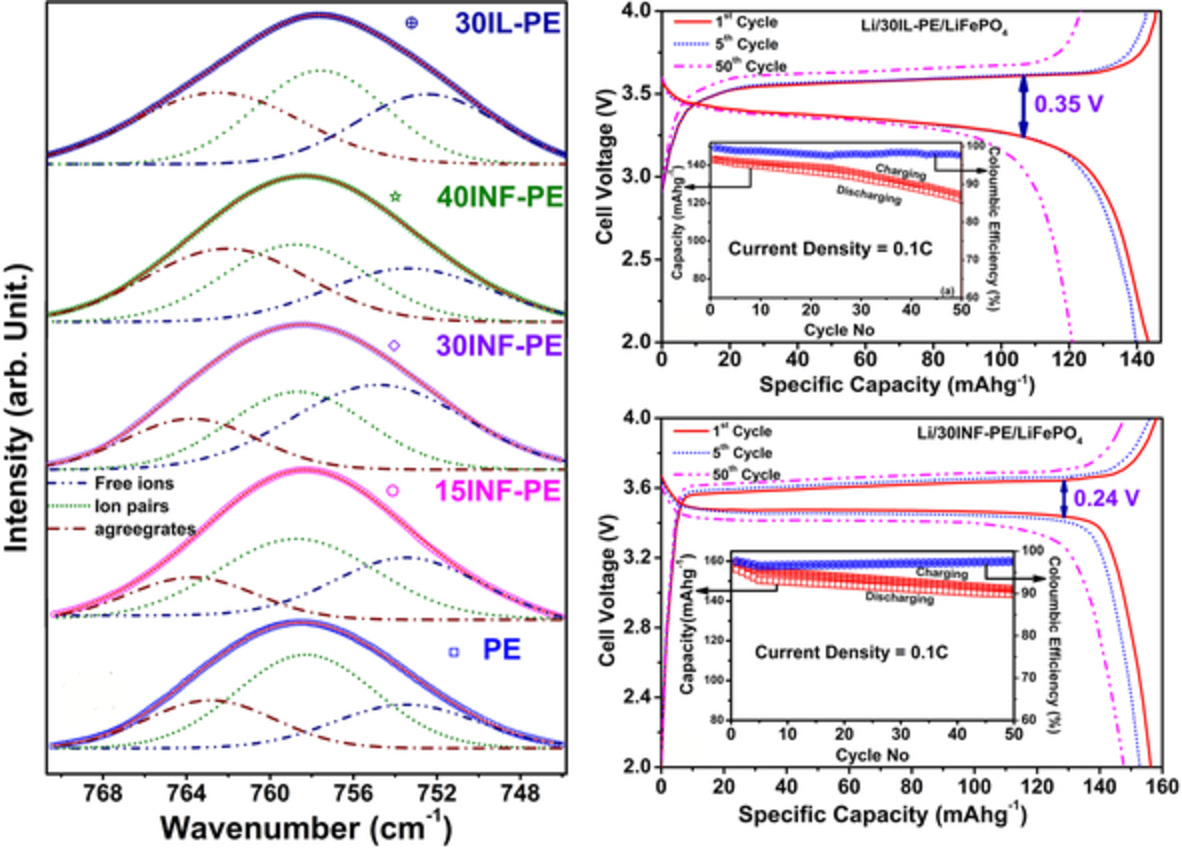
The ionanofluid plasticized PEO-LiTFSI electrolyte in Li/LiFePO4 battery shows superior electrochemical performances as compared to the ionic liquid plasticized electrolyte. The ionanofluid significantly improves the free ion concentration within the electrolyte by reducing the ion-pair concentration.
Modeling the effect of non-linear process parameters on the prediction of hydrogen production by steam reforming of bio-oil and glycerol using artificial neural network
- Pages: 10523-10537
- First Published: 01 August 2020
State of charge estimation method based on the extended Kalman filter algorithm with consideration of time-varying battery parameters
- Pages: 10538-10550
- First Published: 23 July 2020
Unveiling active sites by structural tailoring of two-dimensional niobium disulfide for improved electrocatalytic hydrogen evolution reaction
- Pages: 10551-10561
- First Published: 16 July 2020
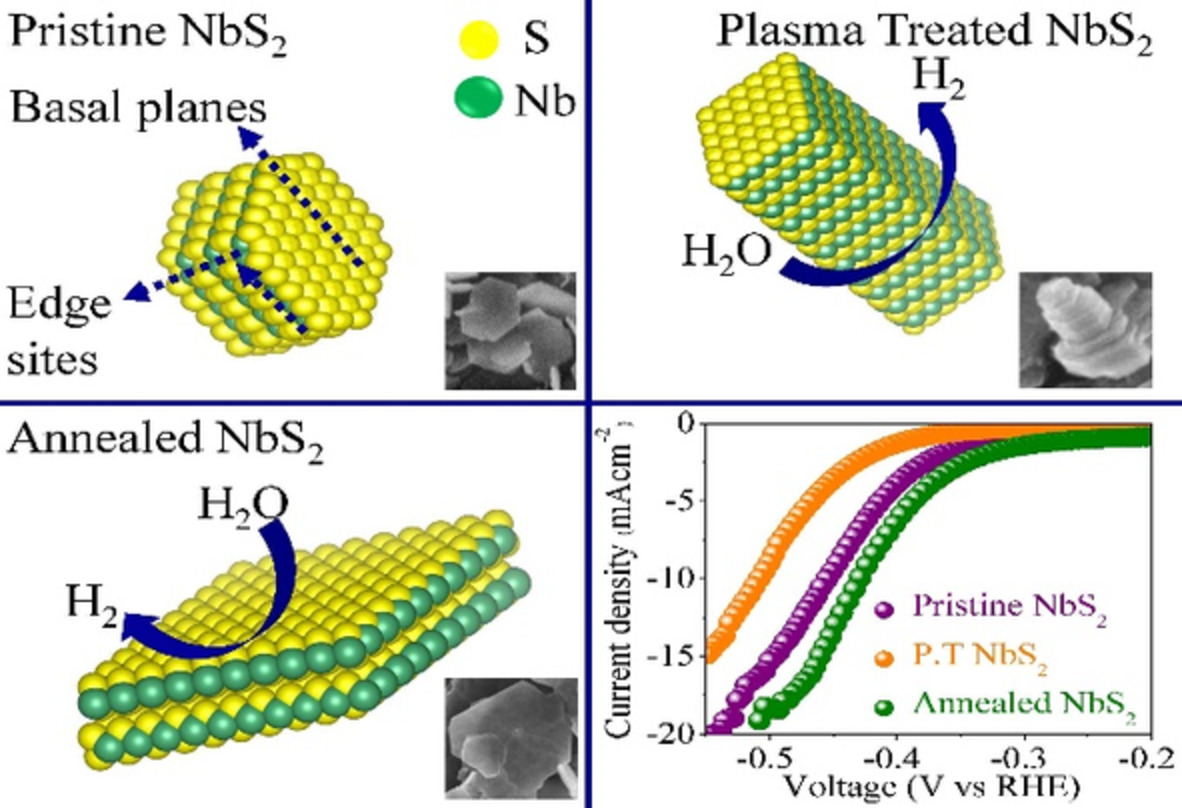
It concludes the synthesis, post-treatments to electrocatalytic performance steps. Post-annealing and plasma treatments are used to modify the structure of pristine NbS2 for better hydrogen evolution performance. Annealing induced thinning which exposed extra basal plane and enhanced electro-catalytic results are achieved.
Preparation and characterisation of aluminium zirconium oxide for metal-oxide-semiconductor capacitor
- Pages: 10562-10575
- First Published: 23 July 2020
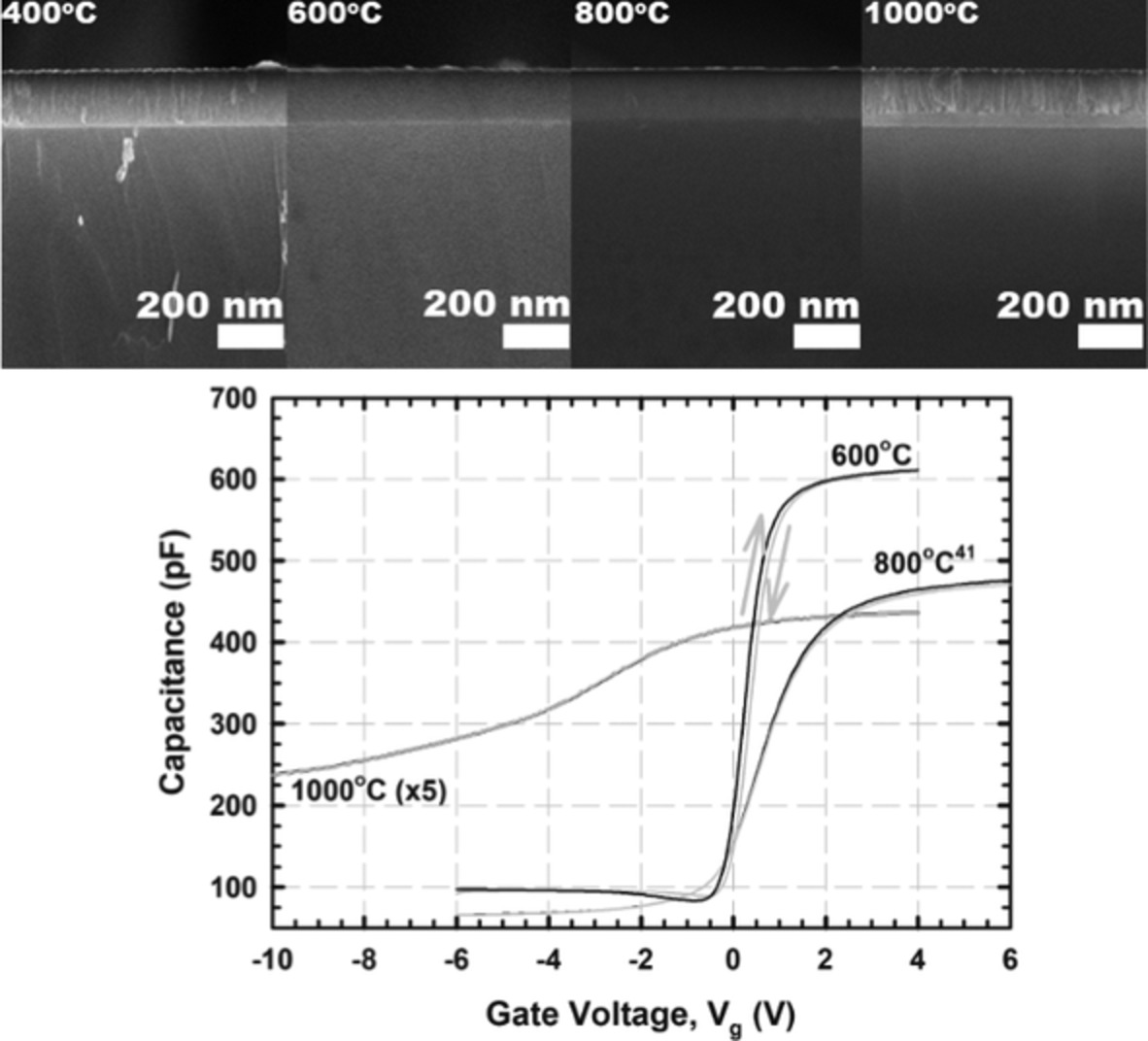
Silicon-based metal-oxide-semiconductor (MOS) capacitor using AlxZryOz as a potential high dielectric constant gate oxide was studied with regards to interface trap density, oxide trapped charges, dielectric constant as well as crystalline phases, oxide thickness, composition, and energy band gap. Interfacial layer formation was impeded and defect formation was suppressed by nitrogen and hydrogen, respectively. Oxygen vacancy formation and annihilation as well as interstitial oxygen formation affected generation of charged traps.
Energy and environmental performance of a heat pump in different power grid scenarios
- Pages: 10576-10598
- First Published: 20 July 2020
Modeling the discharge behavior of a lithium-sulfur battery
- Pages: 10599-10611
- First Published: 28 July 2020
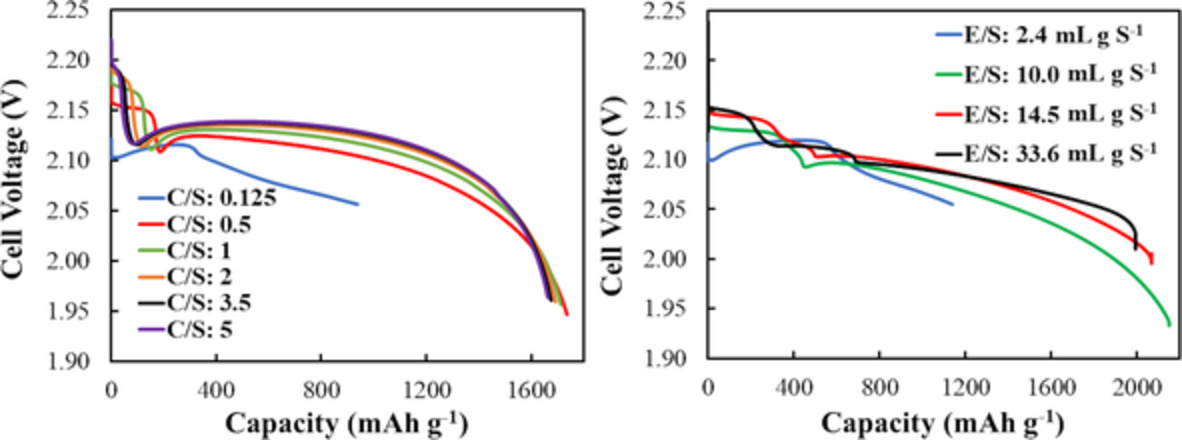
A 1-D electrochemical model of a Li-S battery predicting the dependence of the discharge behavior on the critical cell design parameters (carbon-to-sulfur and electrolyte-to-sulfur ratios) is proposed. Both the discharge voltage and capacity are improved considerably with increasing C/S or E/S ratio up to a certain point, while the dependence of the discharge performance on these factors is less significant at higher ratios. The model offers a mechanistic interpretation of the impact of cell design on the Li-S battery performance.
An efficient bio-inspired catalytic tool for hydrogen release at room temperature from a stable borohydride solution
- Pages: 10612-10627
- First Published: 21 July 2020
Effects of metal foam on exergy and entropy of nanofluids in a heat sink applied for thermal management of electronic components
- Pages: 10628-10651
- First Published: 23 July 2020
Ultrahigh voltage and energy density aluminum-air battery based on aqueous alkaline-acid hybrid electrolyte
- Pages: 10652-10661
- First Published: 20 July 2020
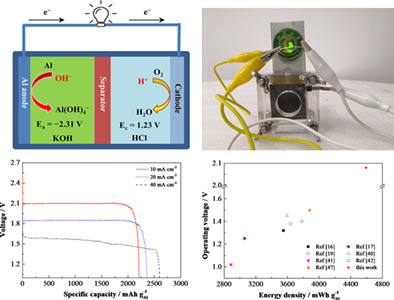
The concept of an ultrahigh voltage AAB based on aqueous alkaline-acid hybrid electrolyte is introduced and demonstrated. The open circuit voltage of the newly designed battery is 2.56 V, 29.9% higher than conventional alkaline AAB. And a high energy density of 4591 mWh gAl−1 is achieved at a discharge voltage of around 2.08 V at 10 mA cm−2.
Multi-objective energy management approach in distribution grid integrated with energy storage units considering the demand response program
- Pages: 10662-10681
- First Published: 27 July 2020
Green route synthesis of nanoporous copper oxide for efficient supercapacitor and capacitive deionization performances
- Pages: 10682-10694
- First Published: 28 July 2020
Cathodic activation of synthesized highly defective monoclinic hydroxyl-functionalized ZrO2 nanoparticles for efficient electrochemical production of hydrogen in alkaline media
- Pages: 10695-10709
- First Published: 28 July 2020
Harnessing low-grade waste heat by operating a hybrid piezoelectric-electromagnetic energy harvester combined with a thermomagnetic engine
- Pages: 10710-10723
- First Published: 28 July 2020
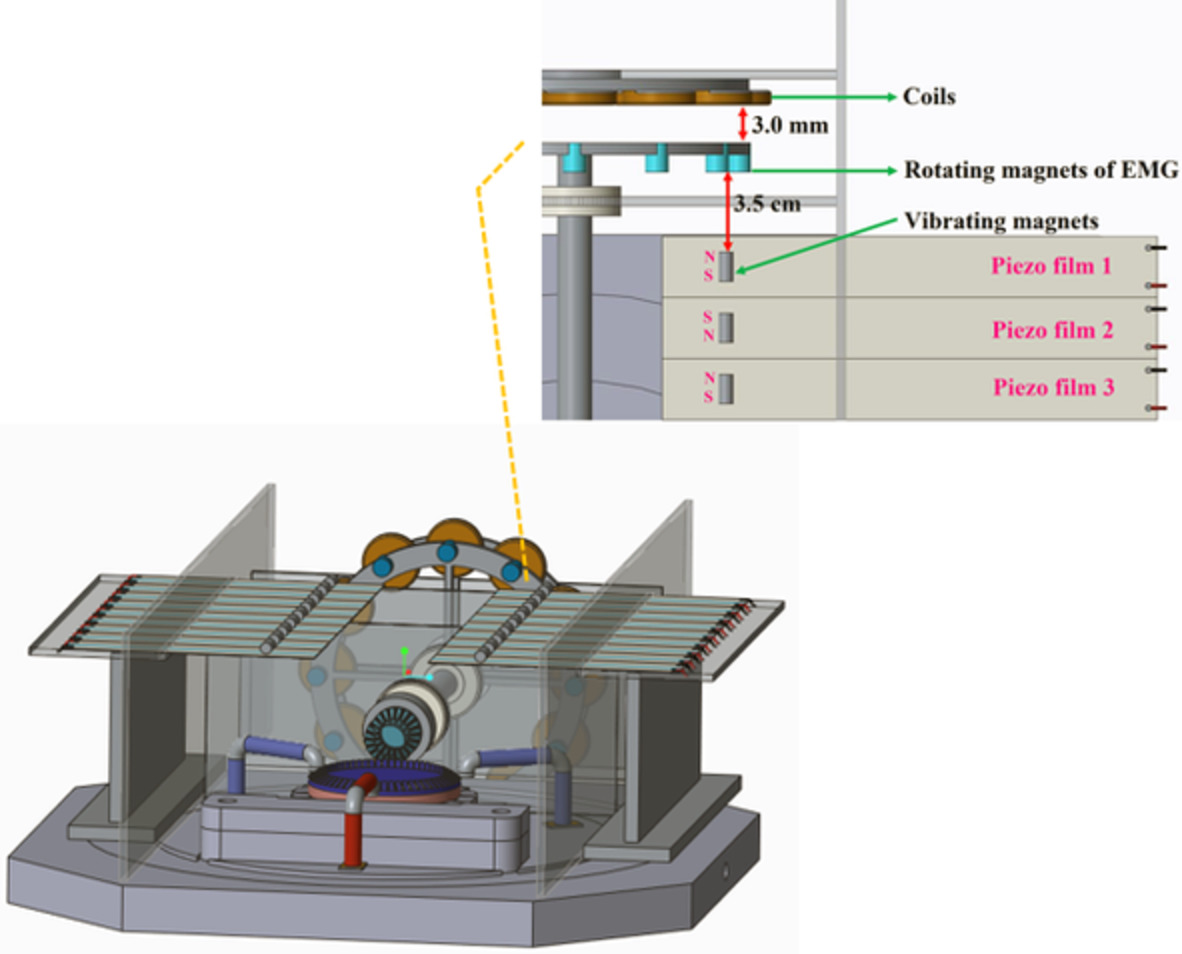
The operation of the hybrid (EMG-TENG) generator in line with the thermomagnetic engine holds great potential in harnessing low-grade thermal energy with high added value as compared to common practices in its utilization. The thermomagnetic engine produced the highest average rotational speed of 226 ± 1.76% rpm when the temperature difference between the hot and cold water jets driving the engine reached 45°C delivering power output of 8.4 mW at a loading resistance of 100 Ω.
Preheating strategy of variable-frequency pulse for lithium battery in cold weather
- Pages: 10724-10738
- First Published: 28 July 2020
Numerical analysis of dopant-free asymmetric silicon heterostructure solar cell with SiO2 as passivation layer
- Pages: 10739-10753
- First Published: 01 August 2020
Supercapacitor behavior of carbon-manganese oxides nanocomposites synthesized by carbon arc
- Pages: 10754-10767
- First Published: 29 July 2020
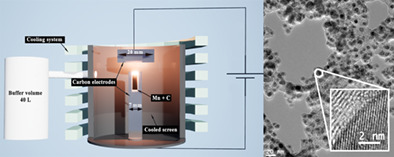
The article «MnOx-carbon arc soot composite for supercapacitor application» (Iurchenkova A.A., Fedorovskaya E.O., Matochkin P.E., Sakhapov S.Z., and Smovzh D.V.*) is devoted to the description of the original method of synthesis of Mn-C composite for supercapacitor electrodes. The method allows obtaining nanoparticles of manganese oxide and carbide in a carbon matrix. The technology allows synthesizing materials of high chemical purity and is easily scaled. The influence of synthesis conditions on the composite structure and phase composition was studied.
Electronic properties of graded Ga1-xAlxN superlattice nanowires photocathode: First-principles
- Pages: 10768-10777
- First Published: 29 July 2020
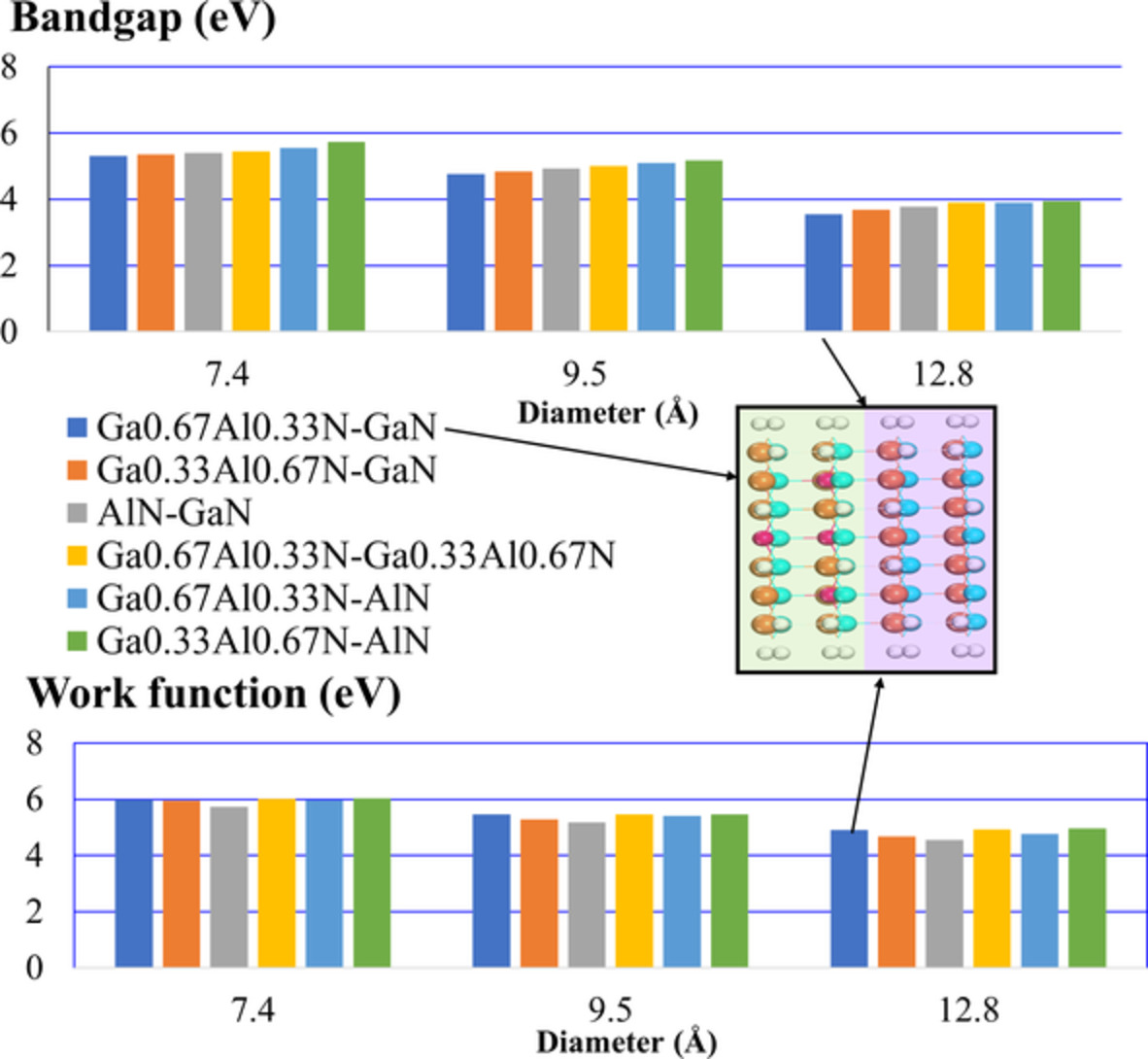
The structure stability, optoelectronic properties of Ga1-xAlxN superlattice nanowires photocathodes is investigated through first-principles. The results show that large-size and high-Al component superlattice nanowires have higher stability. The built-in electric field generated by multiple sublayers of continuous gradient can make the superlattice nanowires show lower band gap and work function.
Small-scale experimental study on the optimisation of a rooftop rainwater energy harvester using electromagnetic generators in light rains
- Pages: 10778-10796
- First Published: 03 August 2020

This research proposes a new rooftop electromagnetic rainwater energy harvester including a pipe-connected tank with a passive rainwater buffer. Experimental results show that the intermittent high-efficiency power generation of the proposed structure is better than the continuous low-efficiency power generation of the traditional structure for energy harvesting in light rain consitions.
Optimal energy management strategy of fuel-cell battery hybrid electric mining truck to achieve minimum lifecycle operation costs
- Pages: 10797-10808
- First Published: 30 July 2020
Mechanochemical synthesis of SnS anodes for sodium ion batteries
- Pages: 10809-10820
- First Published: 29 July 2020
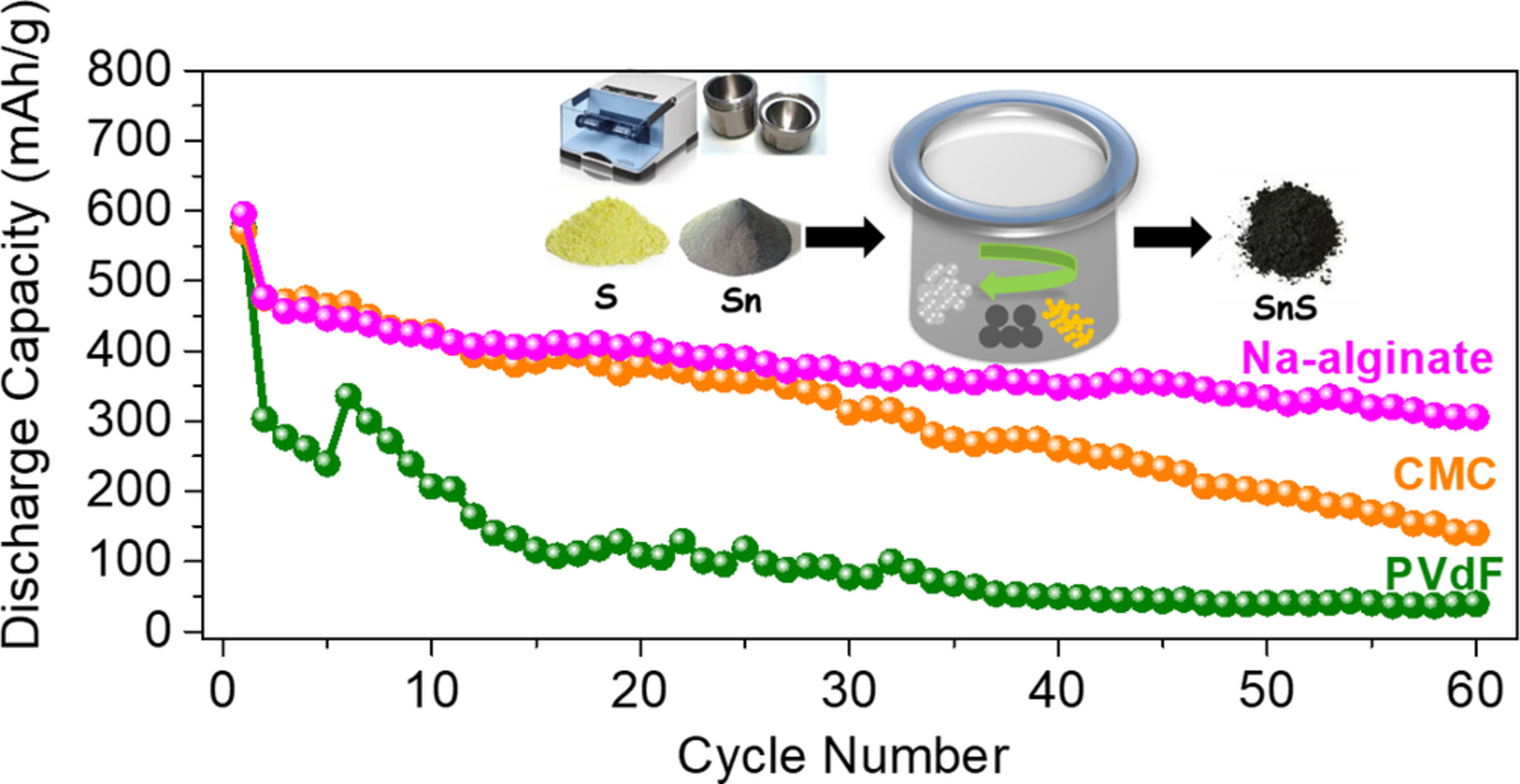
SnS phases were synthesized via cost effective and environment friendly mechanochemical route without addition of carbon derivative to be used as anode for sodium ion batteries. Contrary to the other synthesis approaches which necessity harsh reaction conditions, mechanochemical synthesis does not require the use of solvents, surfactants, high reaction temperature or any purification step. Binder effect was investigated where Na-alginate based electrode exhibited much better electrochemical responds due to its self-healing properties than CMC and PVdF supported by postmortem analysis.
A simple flame strategy for constructing W-doped BiVO4 photoanodes with enhanced photoelectrochemical water splitting
- Pages: 10821-10831
- First Published: 06 August 2020
Catalytic co-pyrolysis of packaging plastic and wood waste to achieve H2 rich syngas
- Pages: 10832-10845
- First Published: 06 August 2020
Effect of using betalain, anthocyanin and chlorophyll dyes together as a sensitizer on enhancing the efficiency of dye-sensitized solar cell
- Pages: 10846-10859
- First Published: 03 August 2020
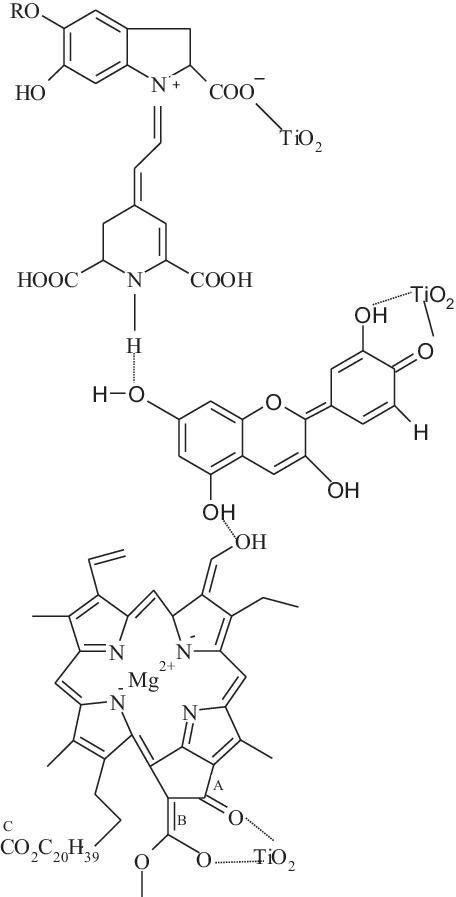
The paper explored the mechanism of working of dye sensitizers for the improvement of efficiency of environmentally benign dye-sensitized solar cells (DSSC). The identified natural dyes namely anthocyanin (A), betalain (B) and chlorophyll (C) were extracted from Roselle (Hibiscus sabdariffa L.), spinach (Spinacia oleracea) and beetroot (Beta vulgaris) respectively. The N3 (synthetic dye chosen for the reference) dye-based cell showed the highest efficiency of 6.19% out of all of 11 cells fabricated using different sensitizers. The DSSC fabricated using the novel mixed dye (ABC) mixture gave the highest efficiency of 3.73%, however it showed similar drop (almost 22%) in efficiency as that with of N3 dye in stability studies. The mechanism for the increase in the overall power conversion efficiency of DSSC was also suggested.
Integration of algae-based biofuel production with an oil refinery: Energy and carbon footprint assessment
- Pages: 10860-10877
- First Published: 22 July 2020
Interfacial photothermal water evaporator based on nanoporous microwave-expanded graphite and coconut waste fibers@recycled polystyrene as substrate
- Pages: 10878-10893
- First Published: 04 August 2020
Development and assessment of geothermal-based underground pumped hydroenergy storage system integrated with organic Rankine cycle and district heating
- Pages: 10894-10907
- First Published: 04 September 2020
Synthesis of nickel hydroxide/reduced graphene oxide composite thin films for water splitting application
- Pages: 10908-10916
- First Published: 08 July 2020
Preliminary assessment of viability of molten-salt tower technology
- Pages: 10917-10925
- First Published: 05 July 2020
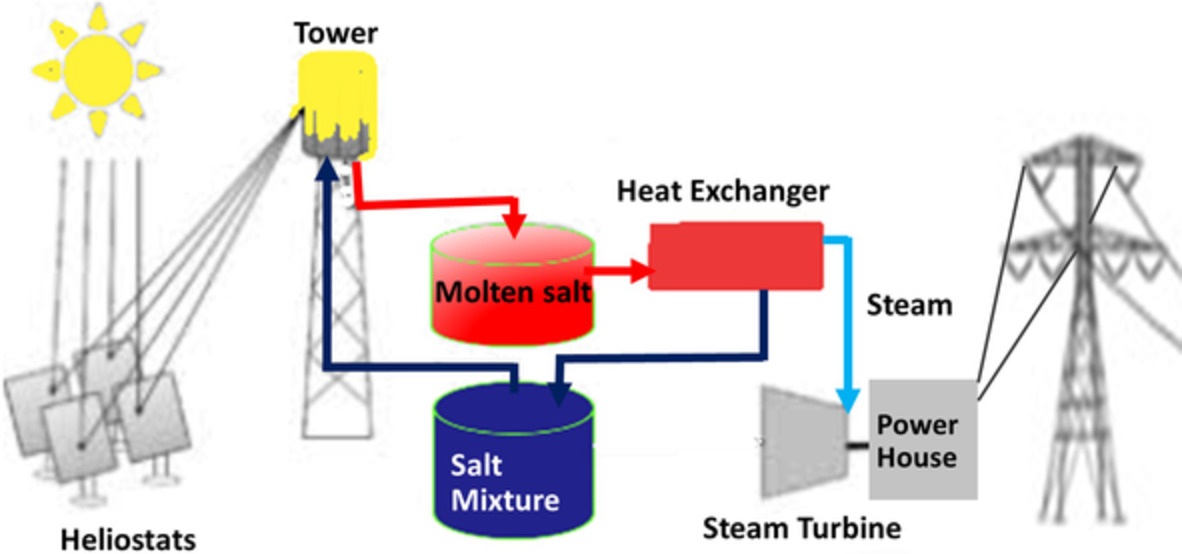
The manuscript proposes that India has to consider solar thermal technology, the molten-salt solar tower technology (STT), that can be ramped up and down. Based on the direct solar irradiance data, many locations are suitable where such STT plants can be set up. Cost analysis demonstrates that the capital cost of STT plant is quite competitive compared to the nuclear and coal thermal technologies because these technologies have high operational costs.
Role of defects and dopants in zinc oxide nanotubes for gas sensing and energy storage applications
- Pages: 10926-10936
- First Published: 07 July 2020
Synergistic effect of titanium-oxide integrated with graphitic nitride hybrid for enhanced electrochemical performance in lithium-sulfur batteries
- Pages: 10937-10945
- First Published: 03 July 2020

TiO2 integrated with g-C3N4 (TiO2@g-C3N4: TOCN) hybrid was prepared by a facile heating treatment from the precursor of urea and commercial TiO2 nanoparticles, which used as sulfur host (TOCN@S) for Li-S batteries. Relying on the synergistic adsorption of polysulfide by TOCN has increased positive active material utilization and reduced the electrochemical resistance and electrode polarization.
Porous bamboo-like CNTs prepared by a simple and low-cost steam activation for supercapacitors
- Pages: 10946-10952
- First Published: 06 July 2020
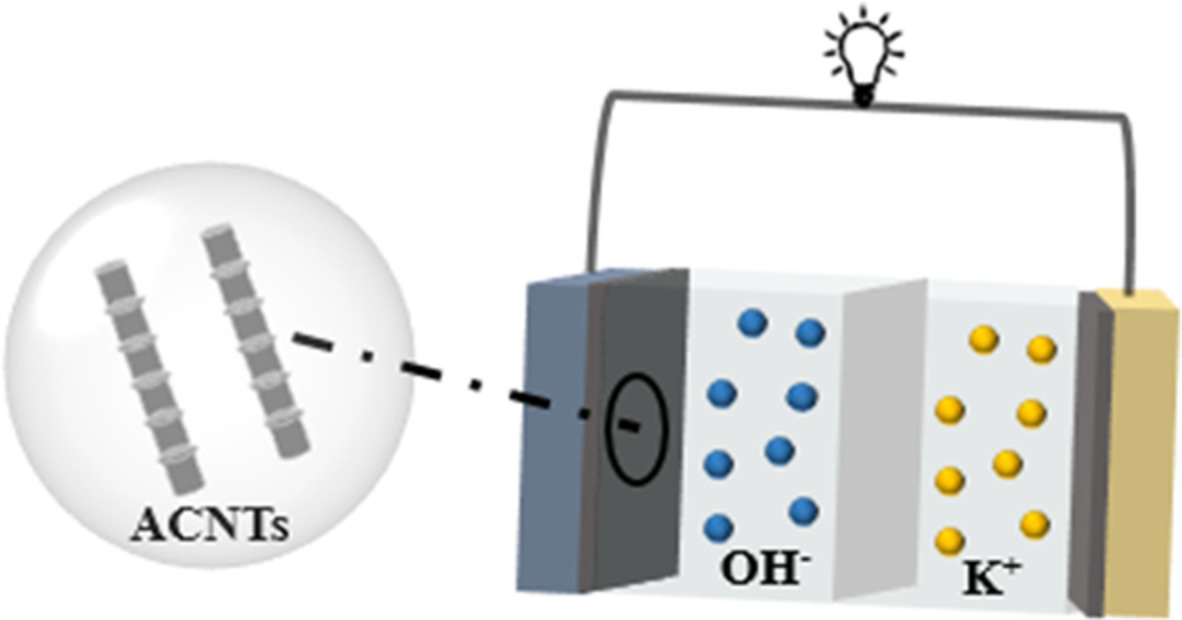
CNTs prepared by conventional methods have disadvantages of high impurity and low yield, which restricts the further application of CNTs, and the preparation of CNTs with large specific surface area and controllable pore structure are even more difficult. Here, porous CNTs were fabricated by activating sulfonated polymer nanotubes with steam at 800°C. Thanks to the unique bamboo-like 1D structure, large specific surface area and porous structure, ACNTs display a high specific capacitance of 276 F g−1 at 1 A g−1.
Impact of coronavirus (COVID-19) pandemic on air transport mobility, energy, and environment: A case study
- Pages: 10953-10961
- First Published: 28 July 2020
Theoretical exploration of quantum efficiency of AlxGa1 − xN monolayer photocathode with varying Al contents and ultra-thin emission layer
- Pages: 10962-10969
- First Published: 01 August 2020

To obtain high-efficiency AlGaN monolayer photocathode, we present an AlxGa1 − xN monolayer photocathode with varying Al contents and ultra-thin emission layer. And then the quantum efficiency formulas of photocathode including reflection-mode and transmission-mode structures have been derived. From simulated results of quantum efficiency under different conditions, we can know that difference in Al components, thickness of AlxGa1 − xN monolayer emission layer, thickness of buffer layer and Al components distribution have a crucial impact on improvement of quantum efficiency.
First-principles investigation of the structure, mechanical and hydrogen adsorption behavior of NiPt nanoparticle
- Pages: 10970-10981
- First Published: 03 August 2020
The promoting effect of Fe on Ni/GDC for the Solid Oxide H2O electrolysis
- Pages: 10982-10995
- First Published: 03 August 2020
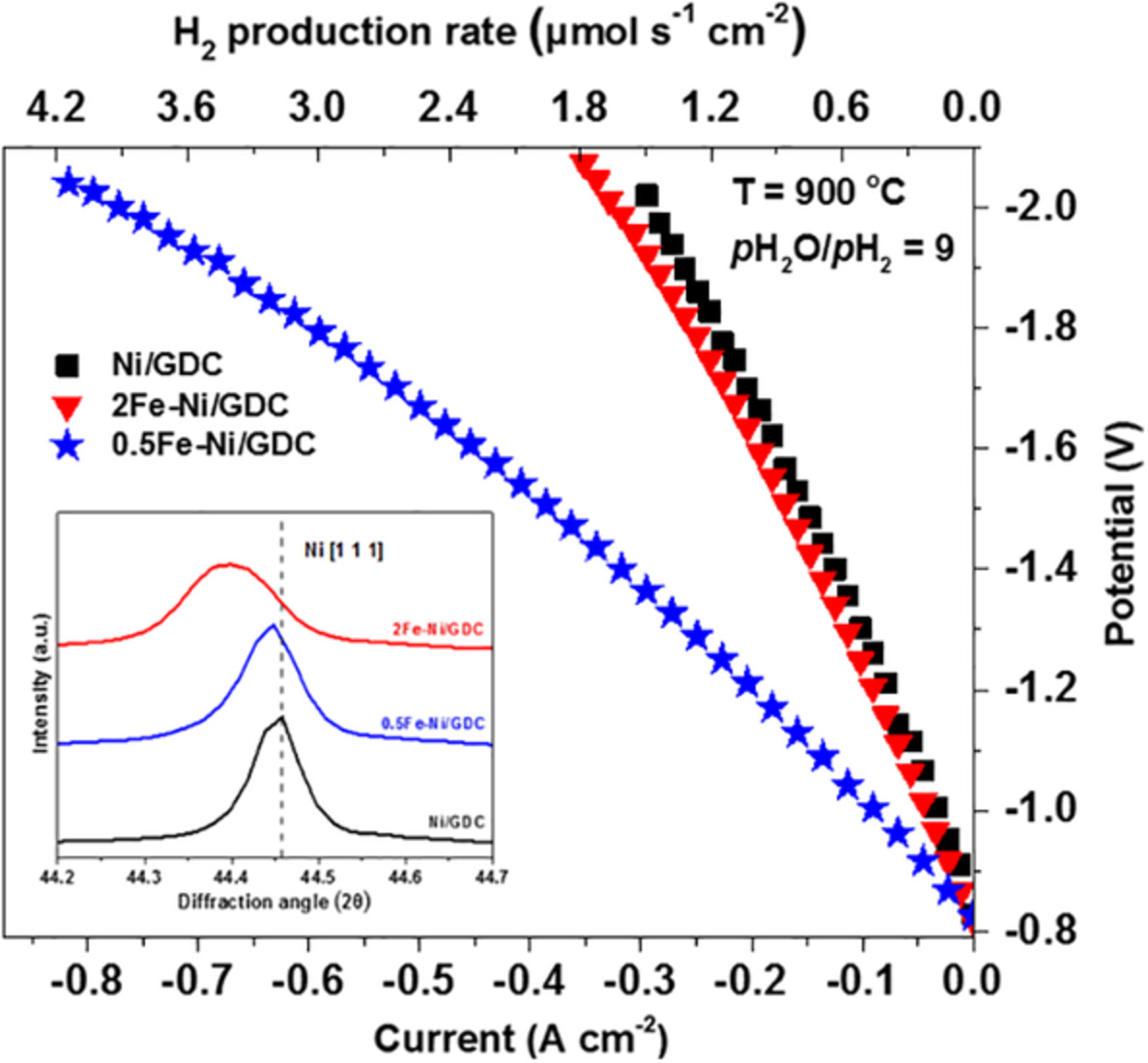
Commercial (SoA) Ni/GDC was modified with Deposition-Precipitation (D.P.) of iron and exhibited enhanced performance as functional SOE fuel electrode. The promoting effect depends on the wt% Fe content, where D.P. of quite low amount of iron, through the formation of Ni-Fe alloy, caused a threefold enhancement compared to Ni/GDC. Interestingly, the 0.5-Fe-Ni/GDC electrode performed similarly high like the noble-metal modified Au-Mo-Ni/GDC. Nevertheless, Fe-Ni/GDC samples seem more susceptible to oxidation in the presence of high pH2O, requiring further investigation.
Methane production from antibiotic bearing swine wastewater using carbon-based materials as electrons' conduits during anaerobic digestion
- Pages: 10996-11005
- First Published: 07 July 2020
Improved size distribution of AgBiS2 colloidal nanocrystals by optimized synthetic route enhances photovoltaic performance
- Pages: 11006-11014
- First Published: 20 July 2020
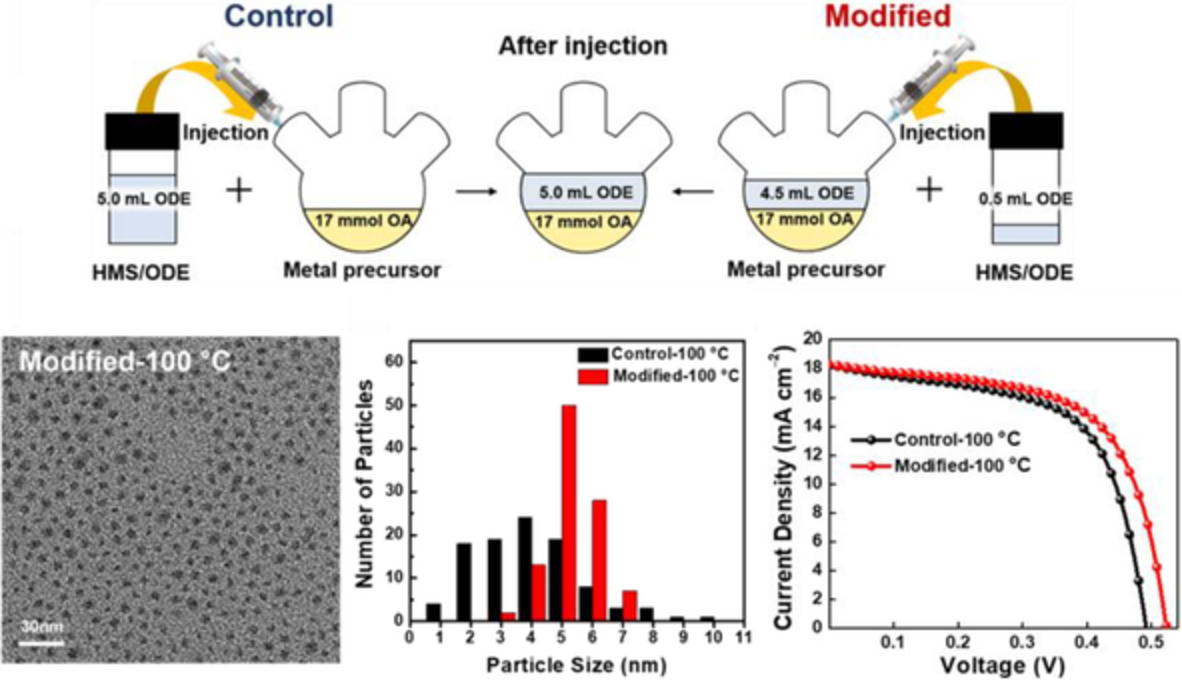
Balancing the growth and nucleation leads to the improved size distribution of colloidal AgBiS2 nanocrystals (NCs) by adding the 1-octadecene (ODE) as non-coordinating solvent to control the concentration of oleic acid. Device parameter based on AgBiS2 NCs synthesized with modified method shows the enhanced open-circuit voltage (VOC) value owing to decreased energetic disorder and band tail broadening of AgBiS2 NCs.




